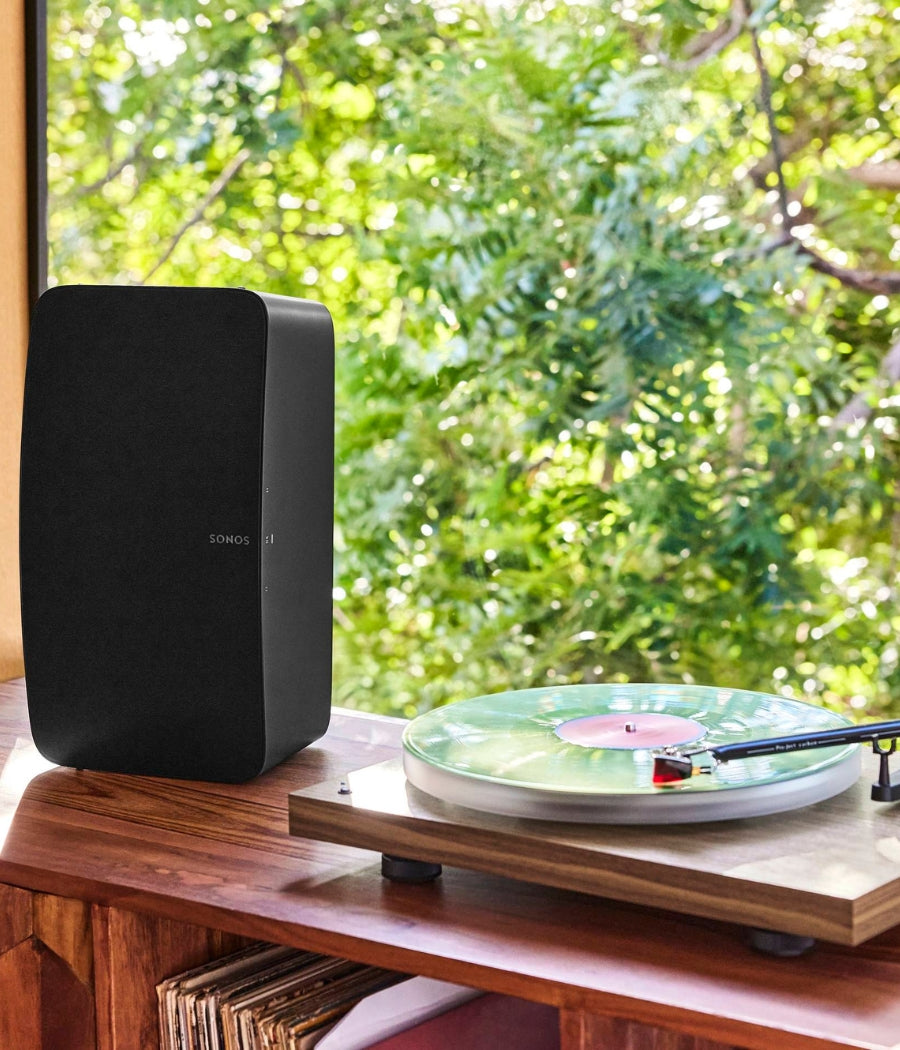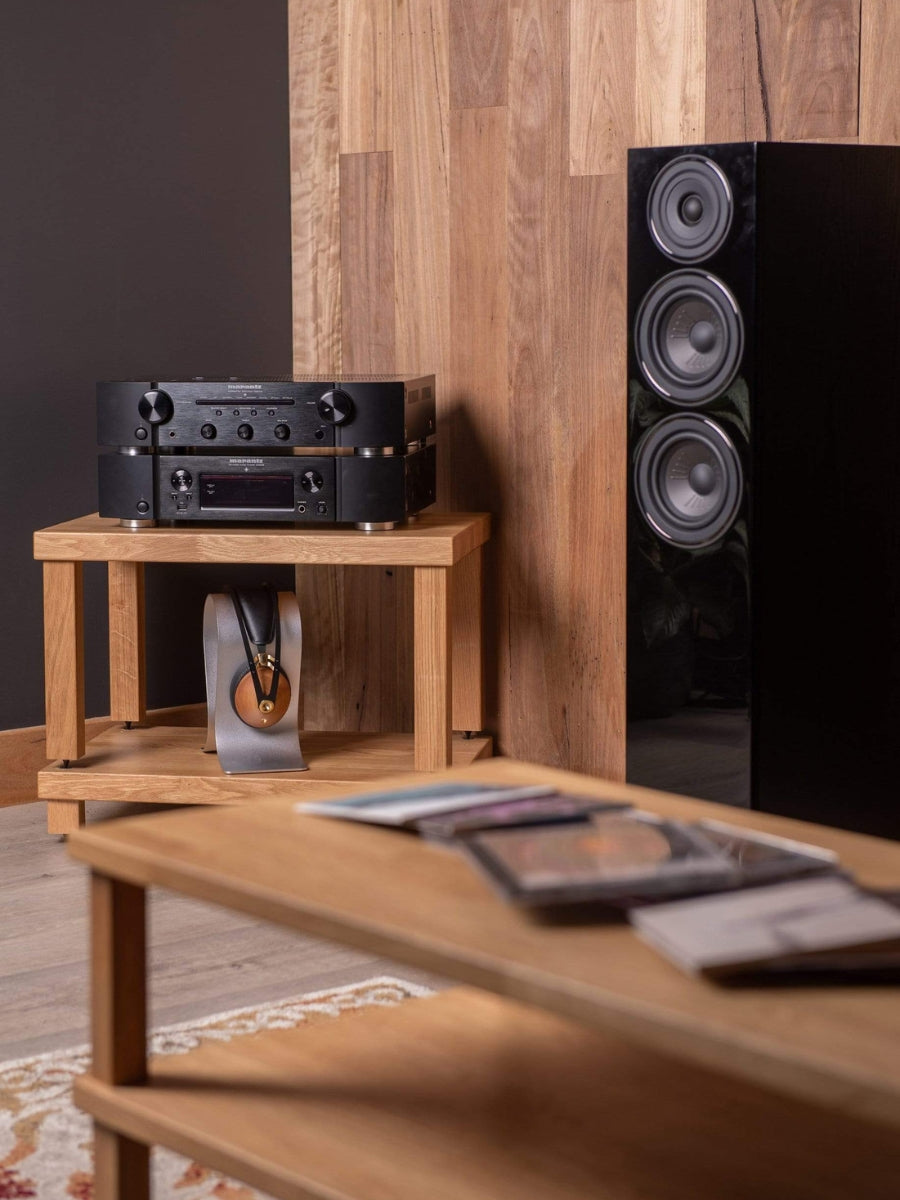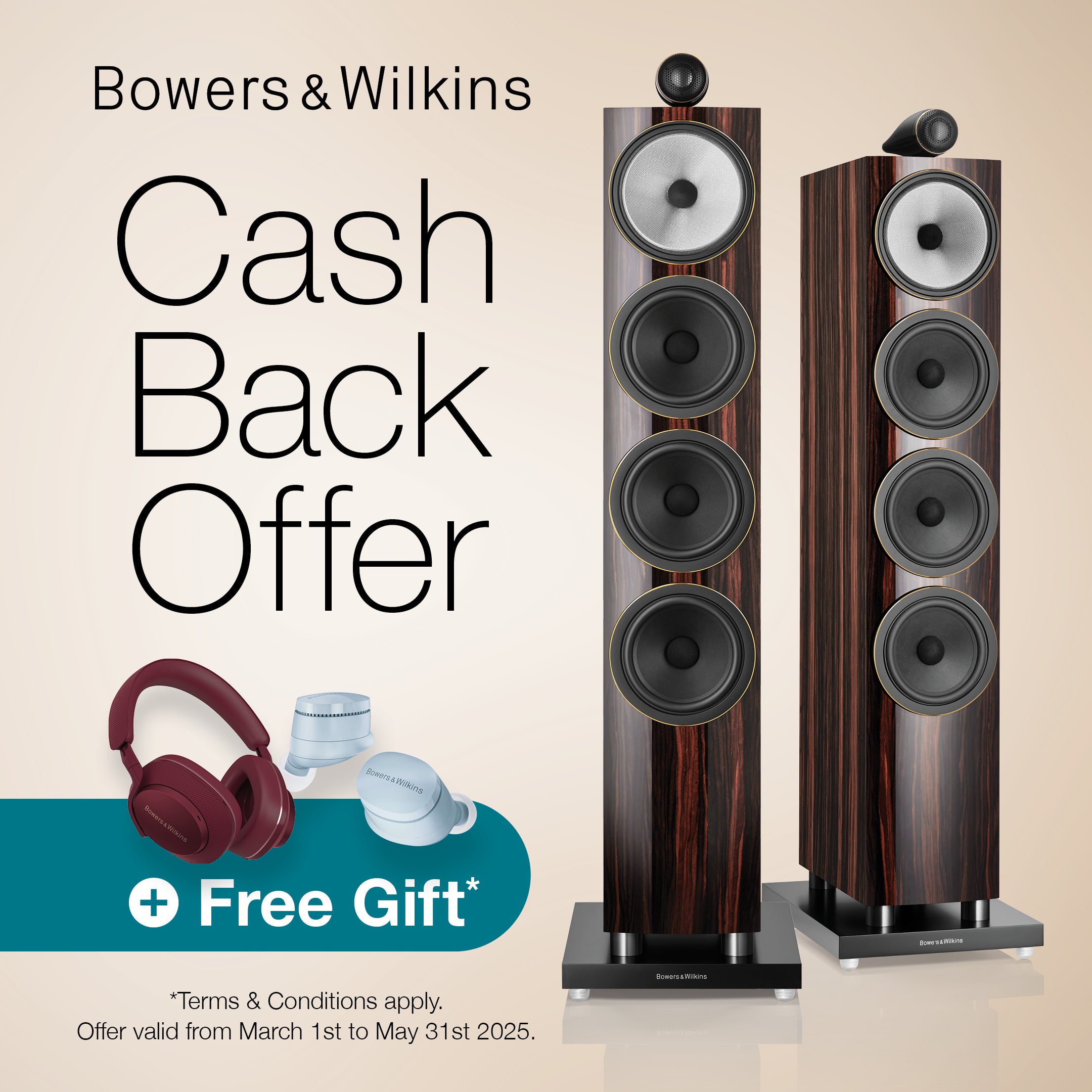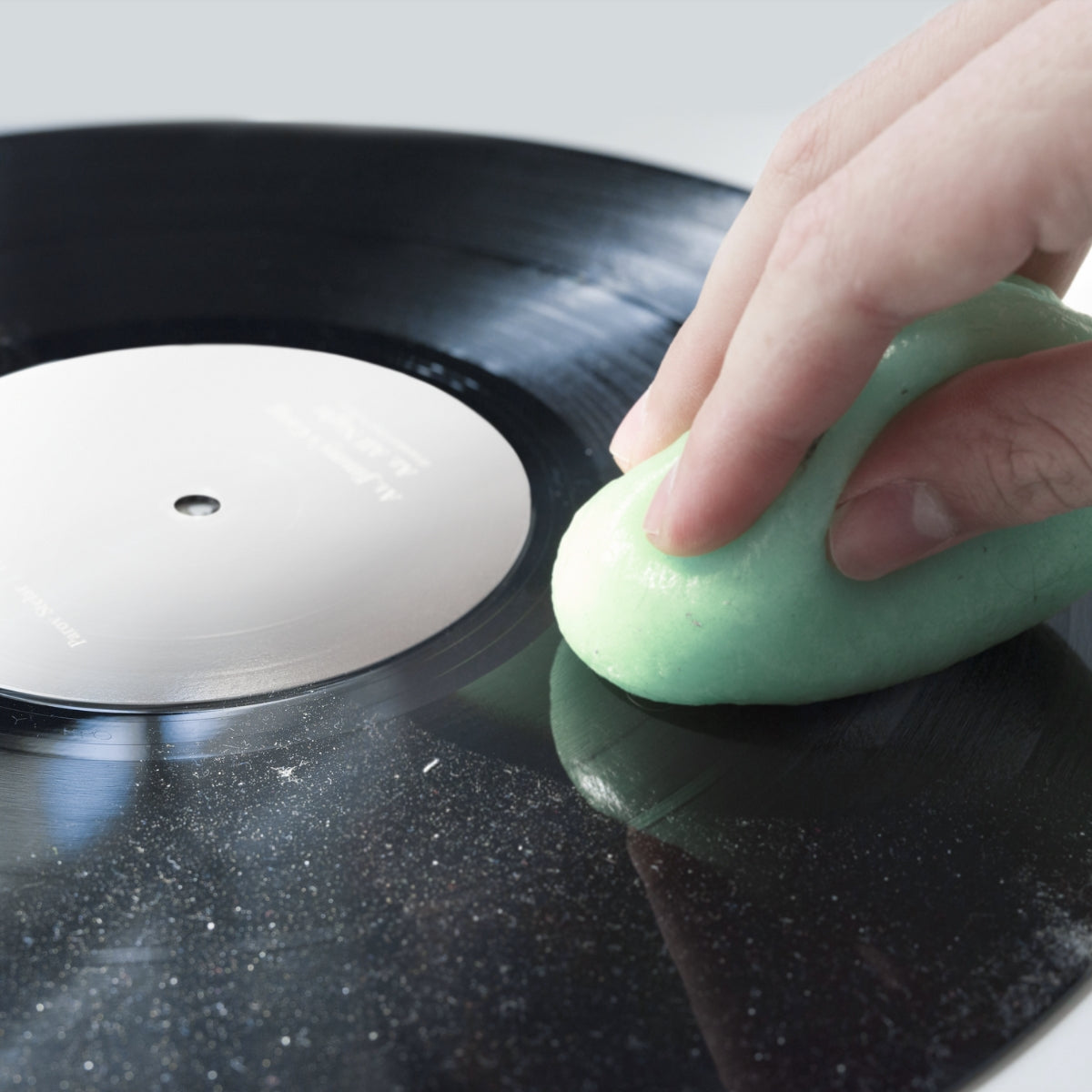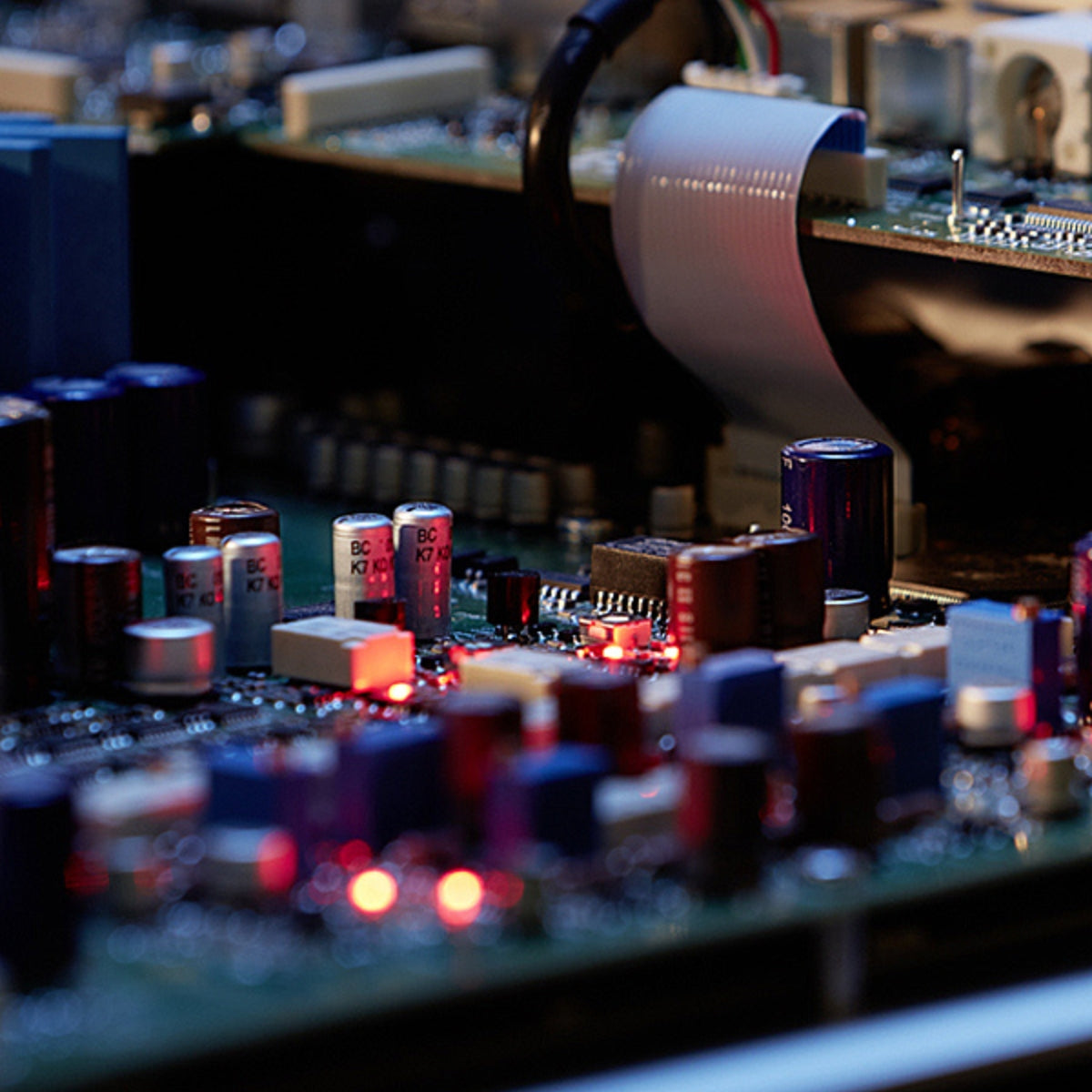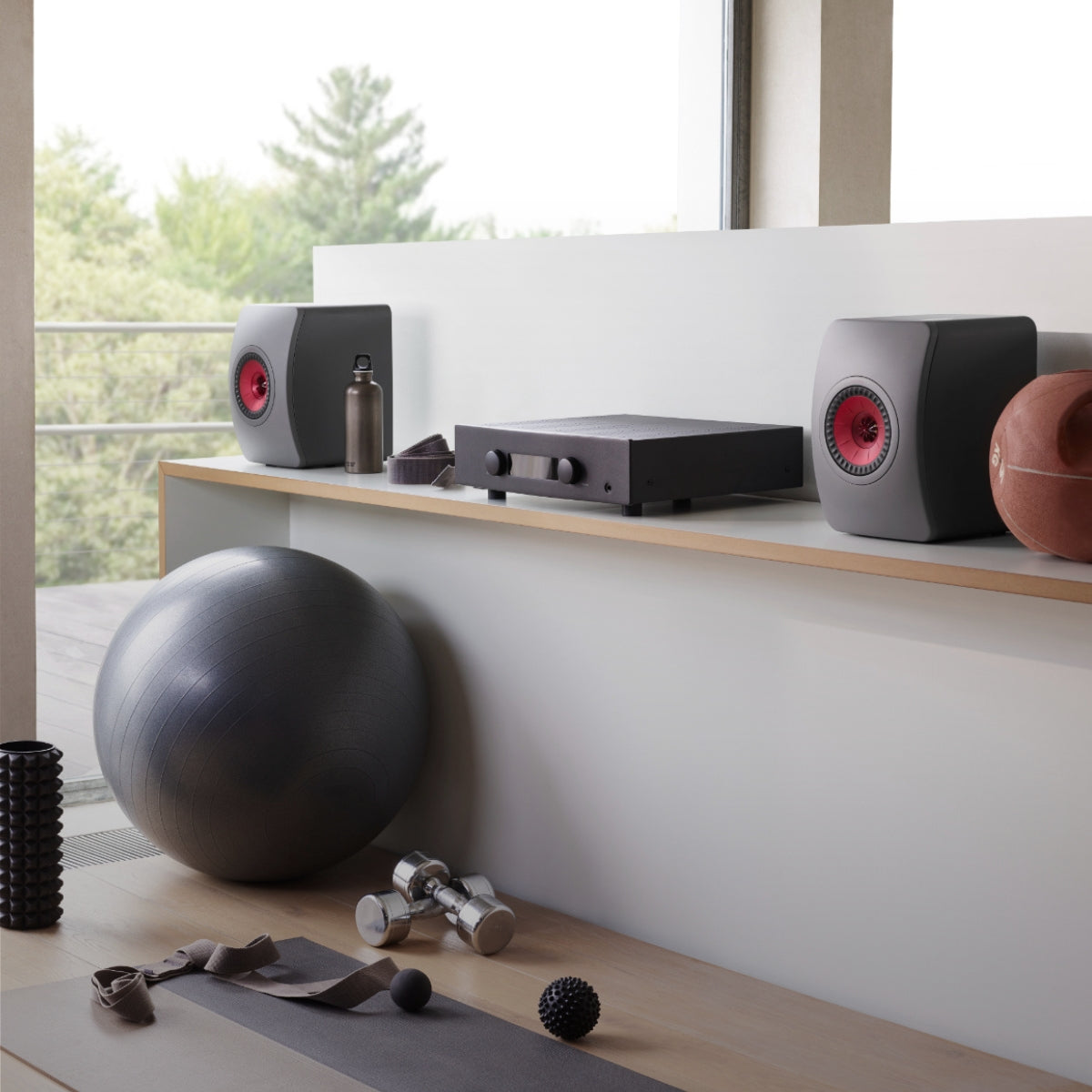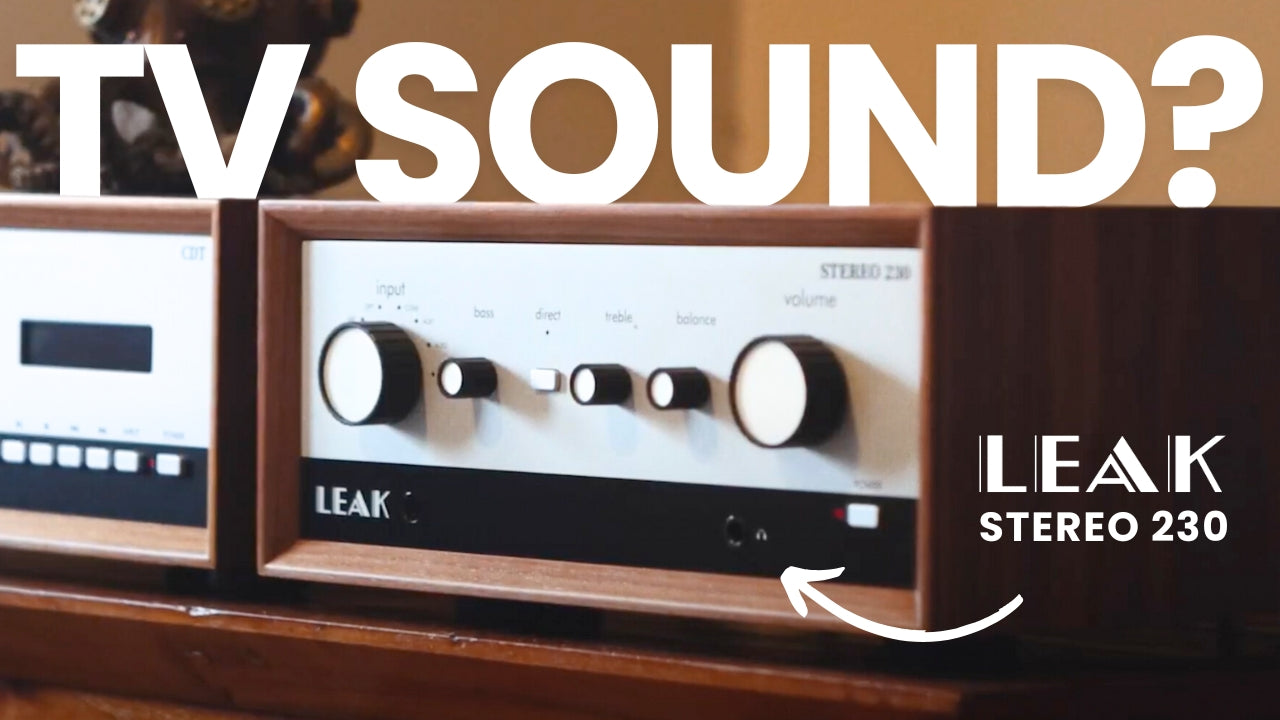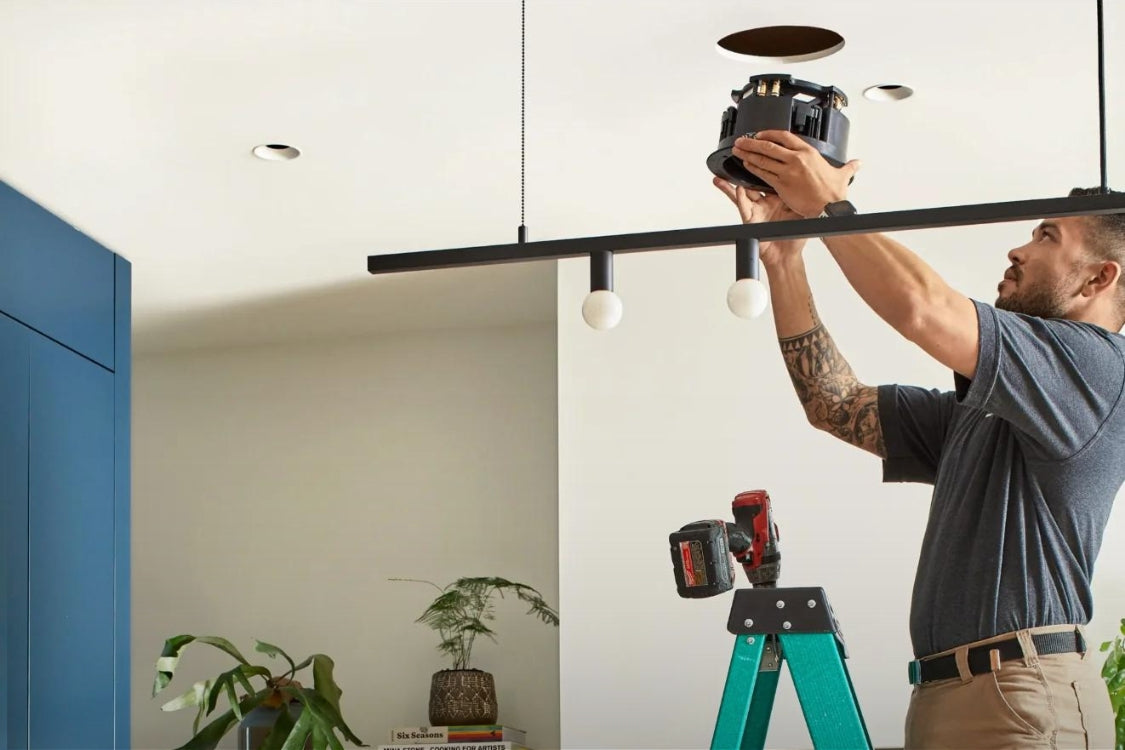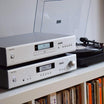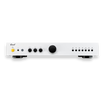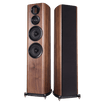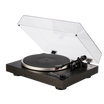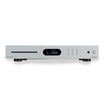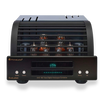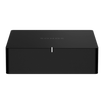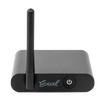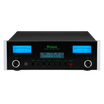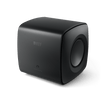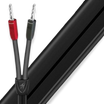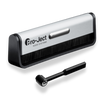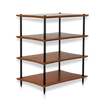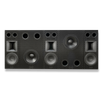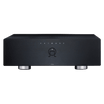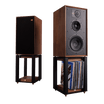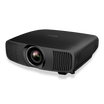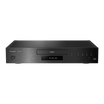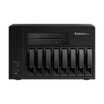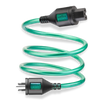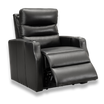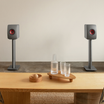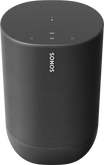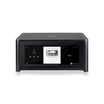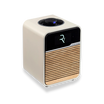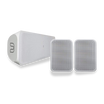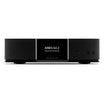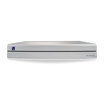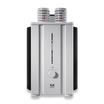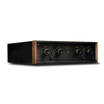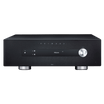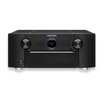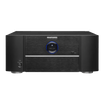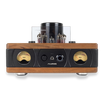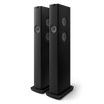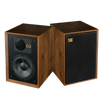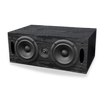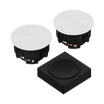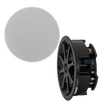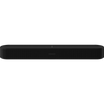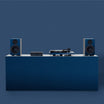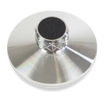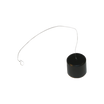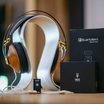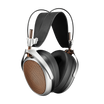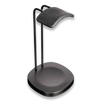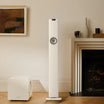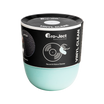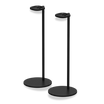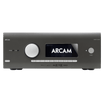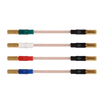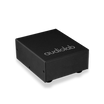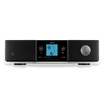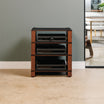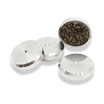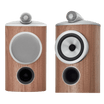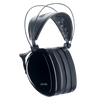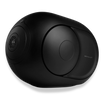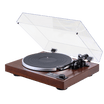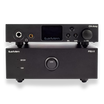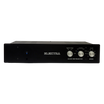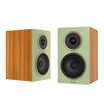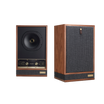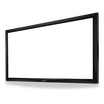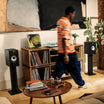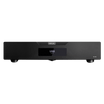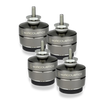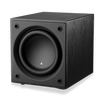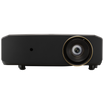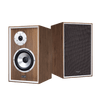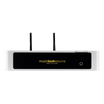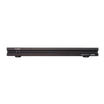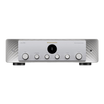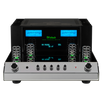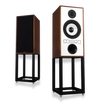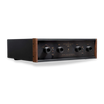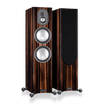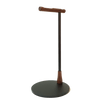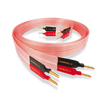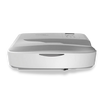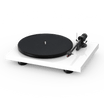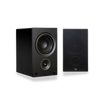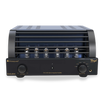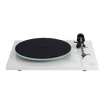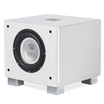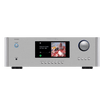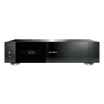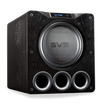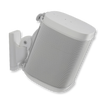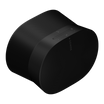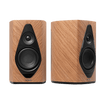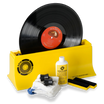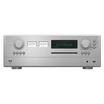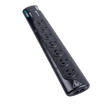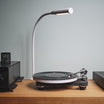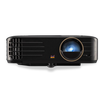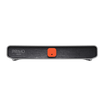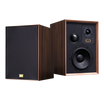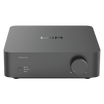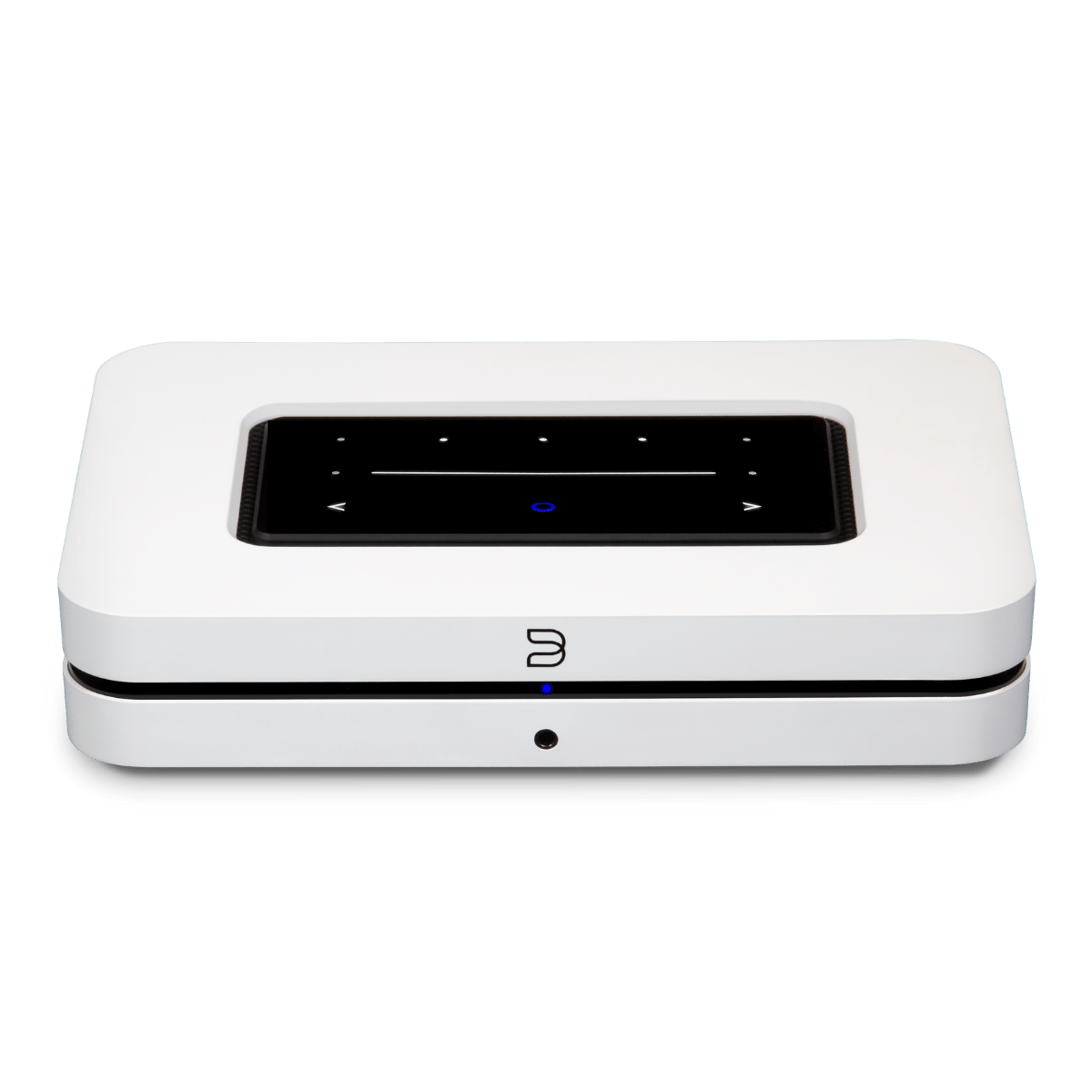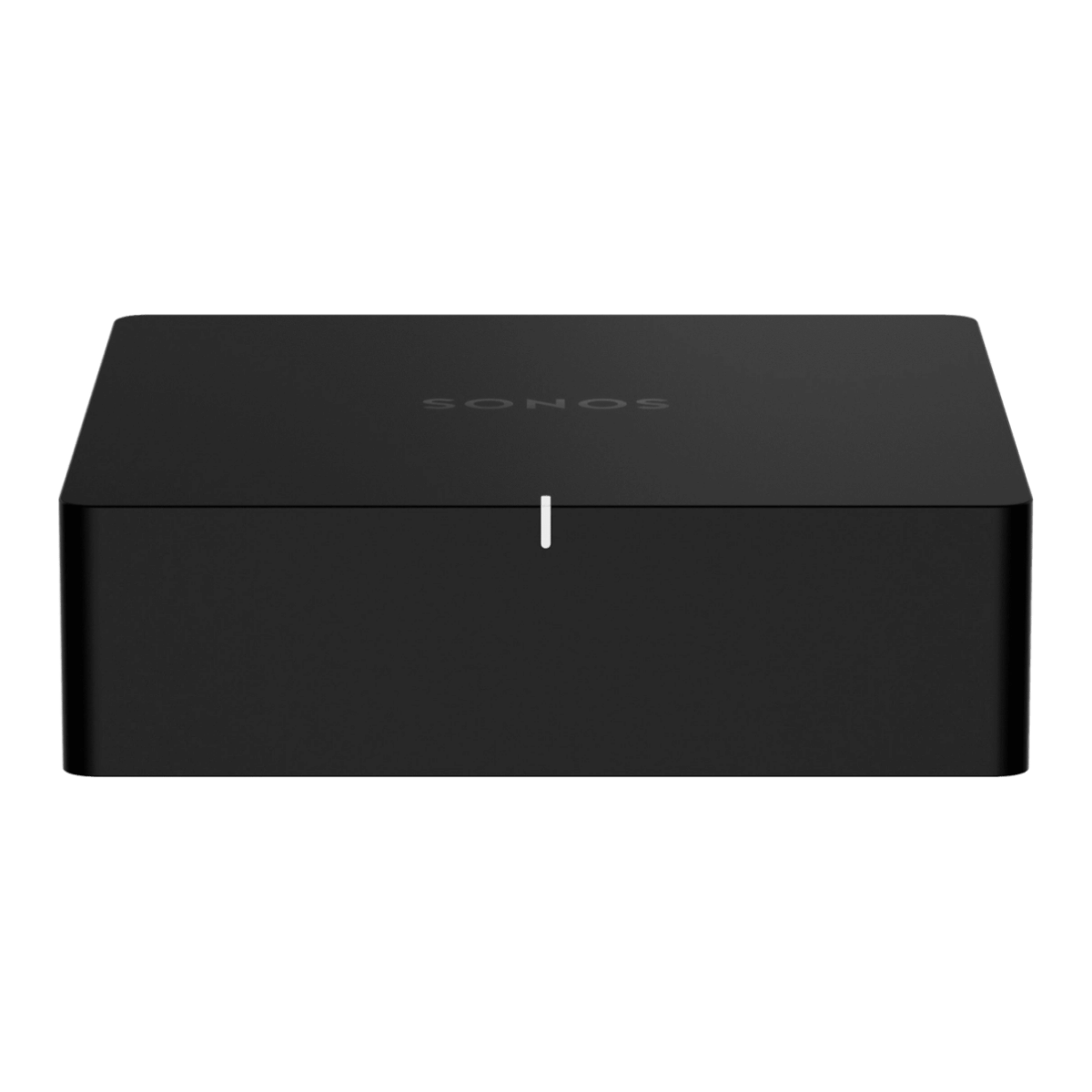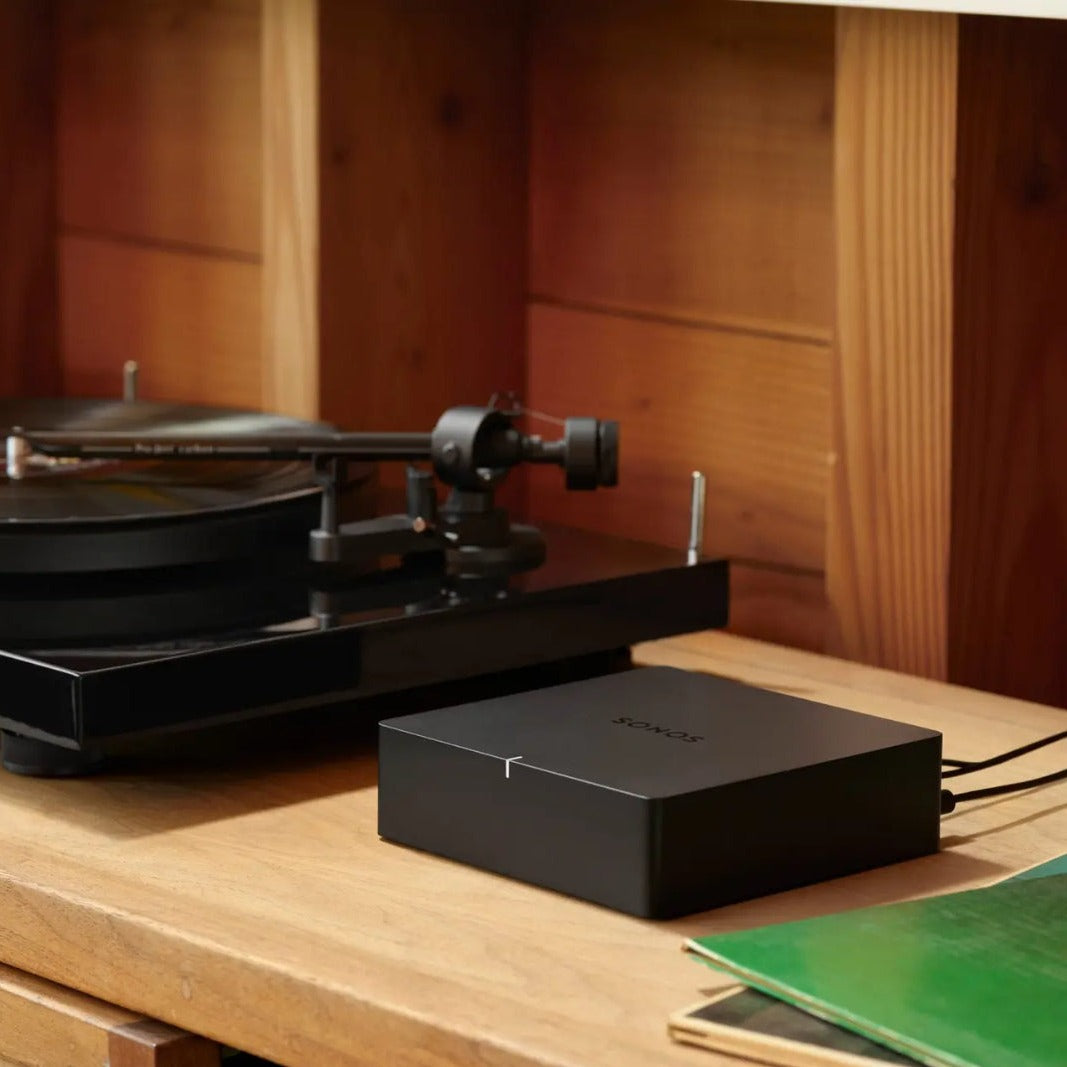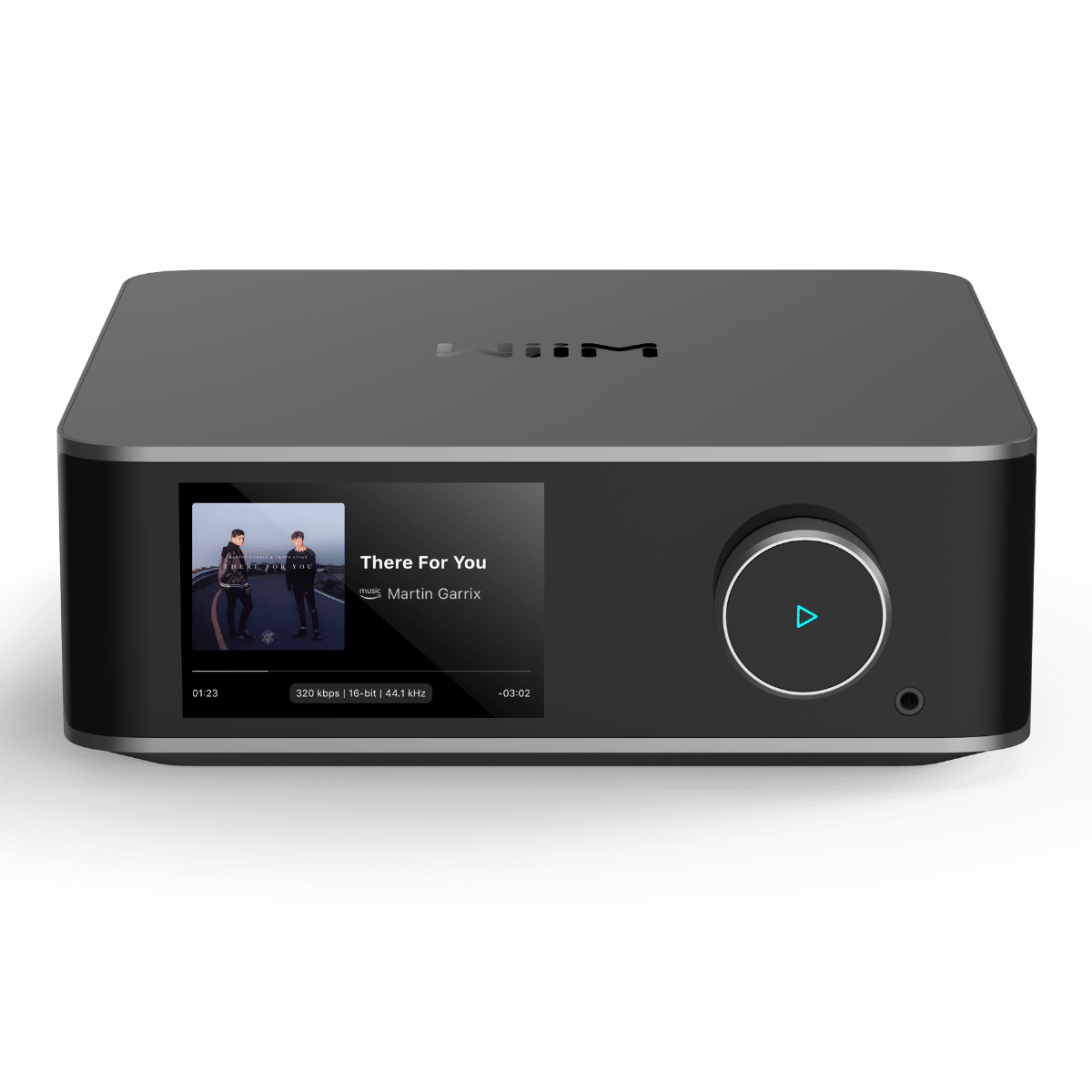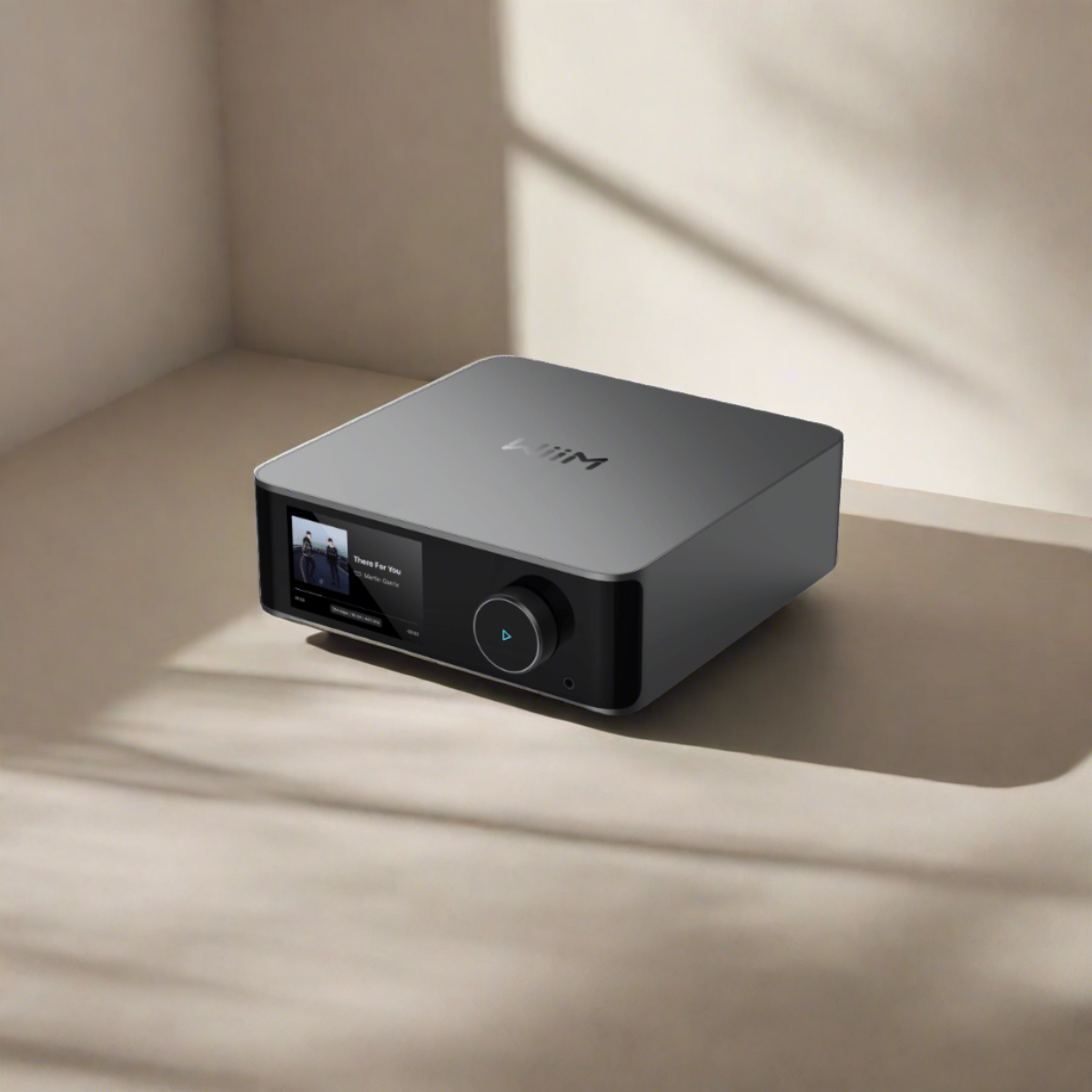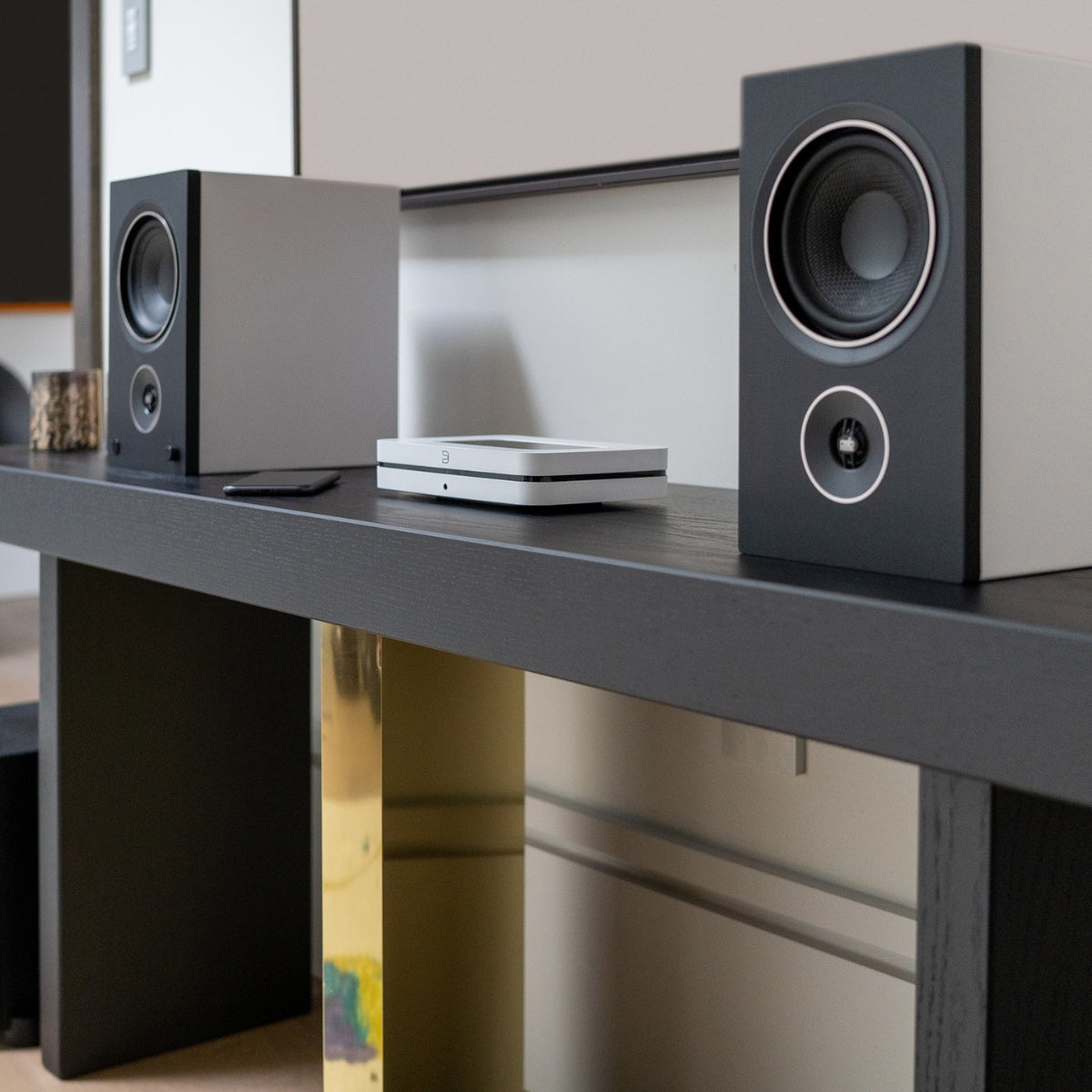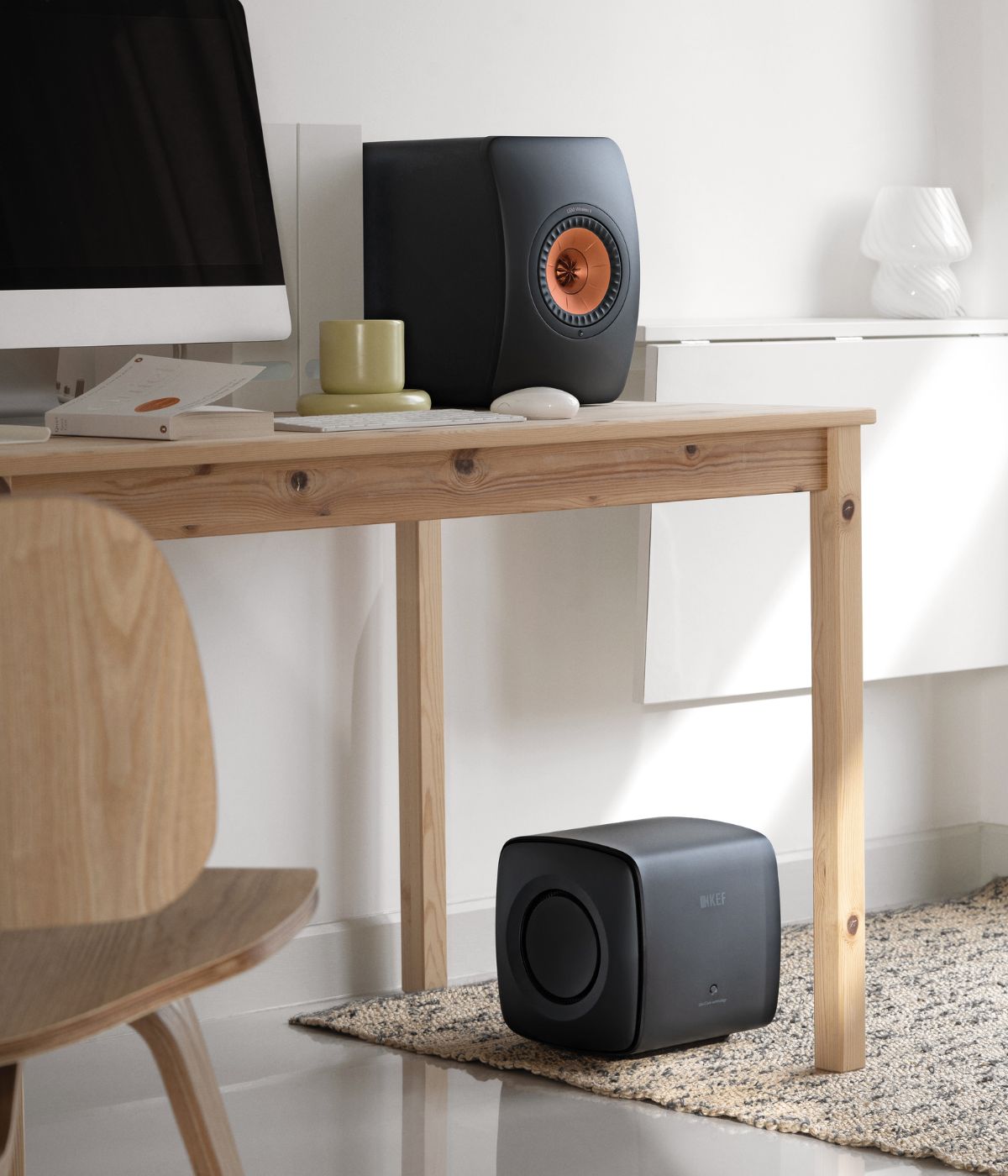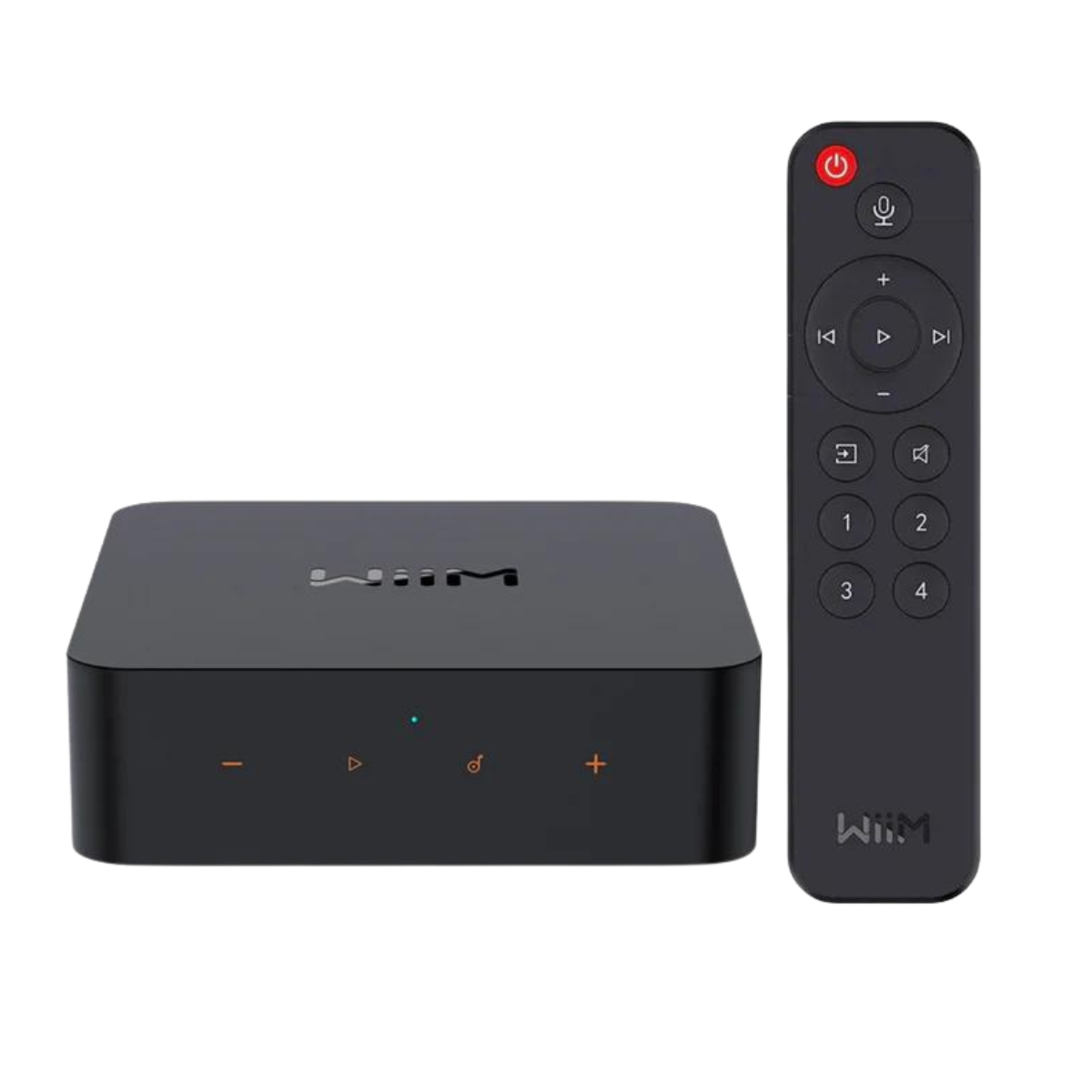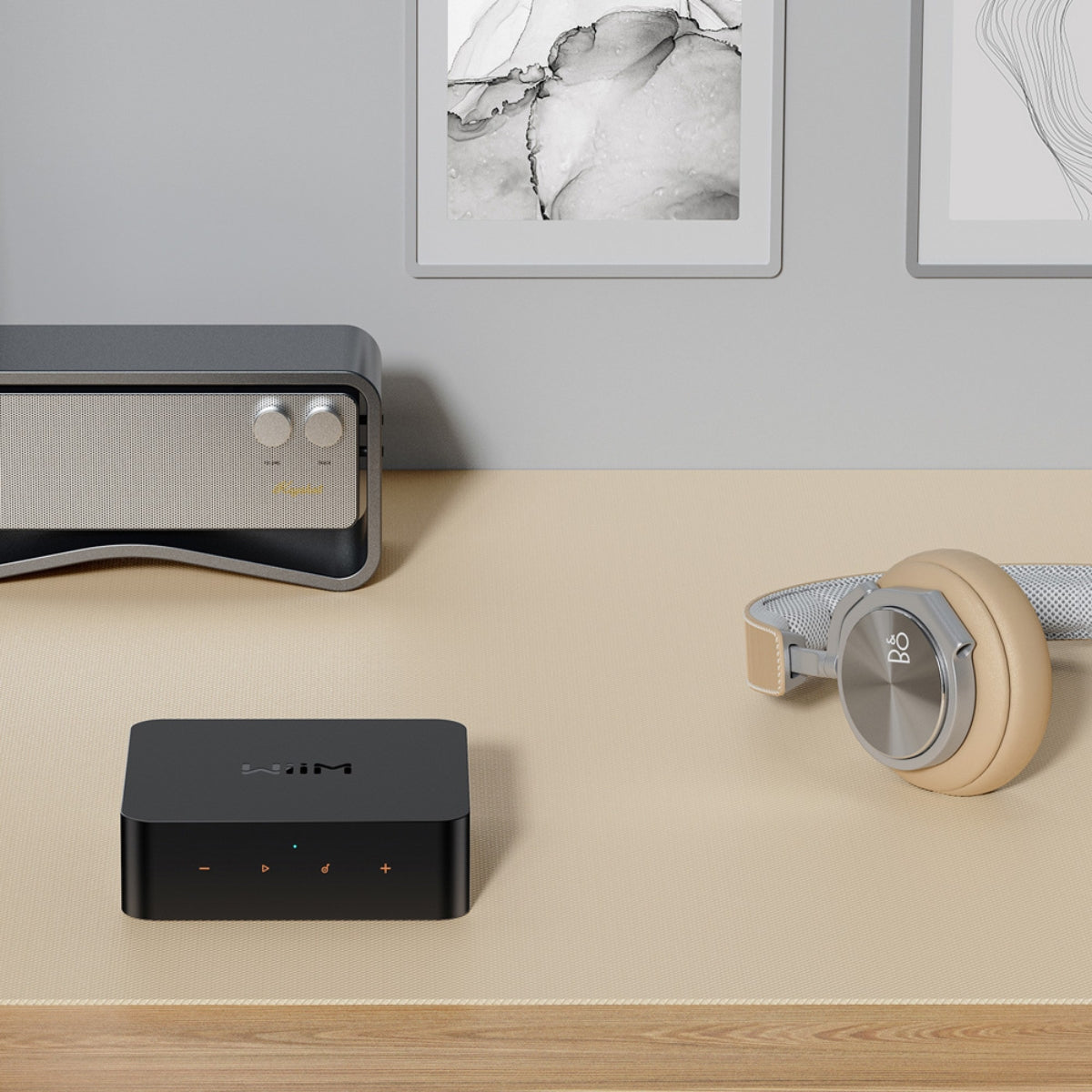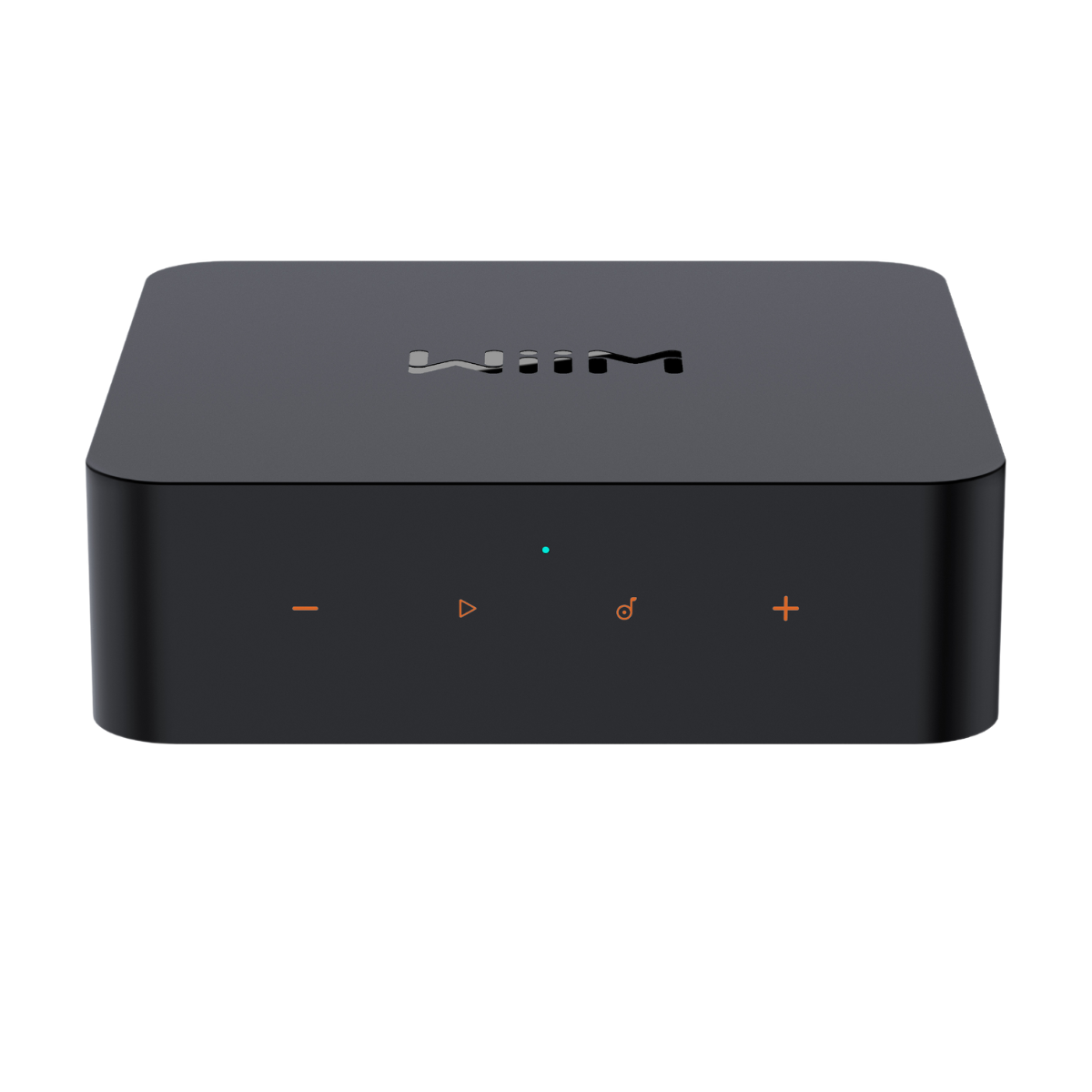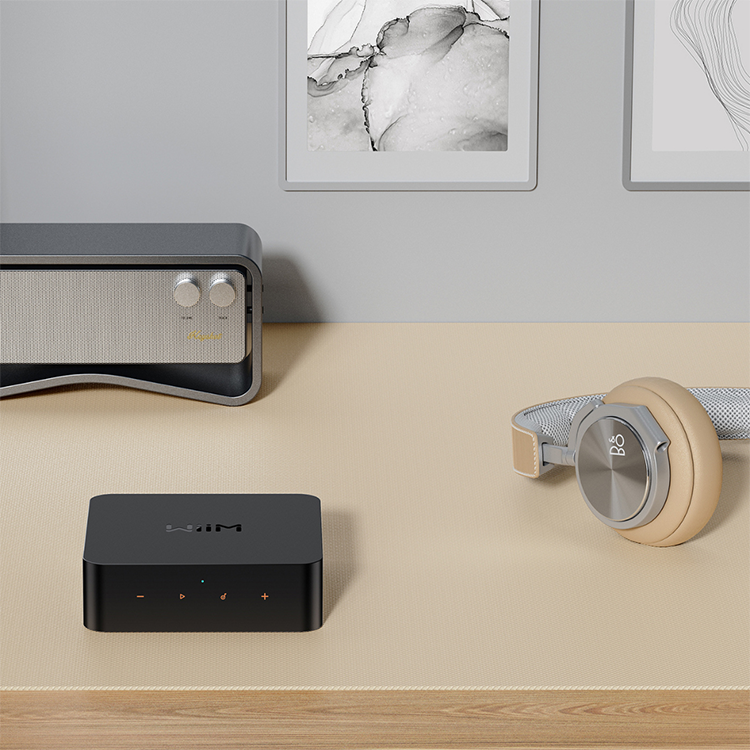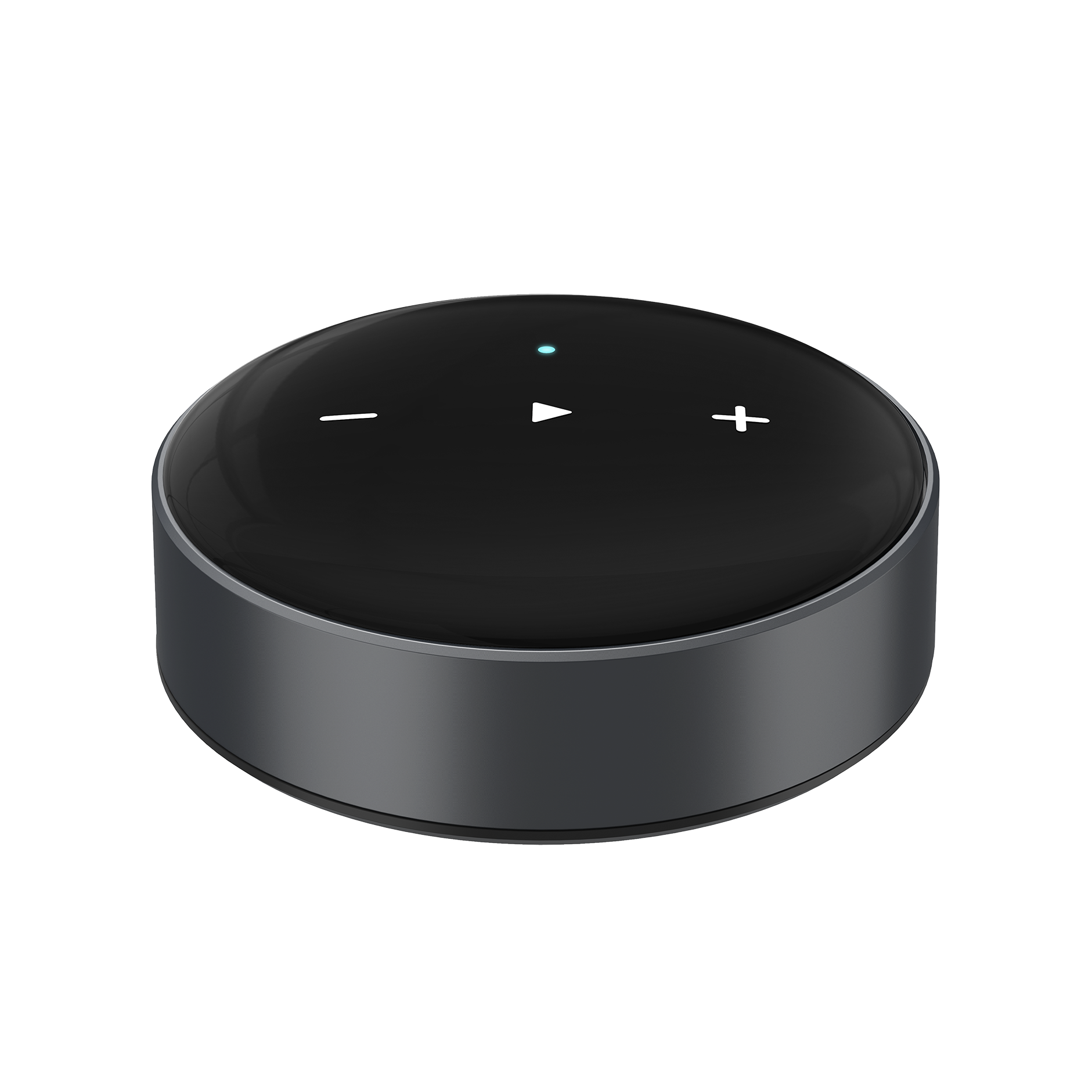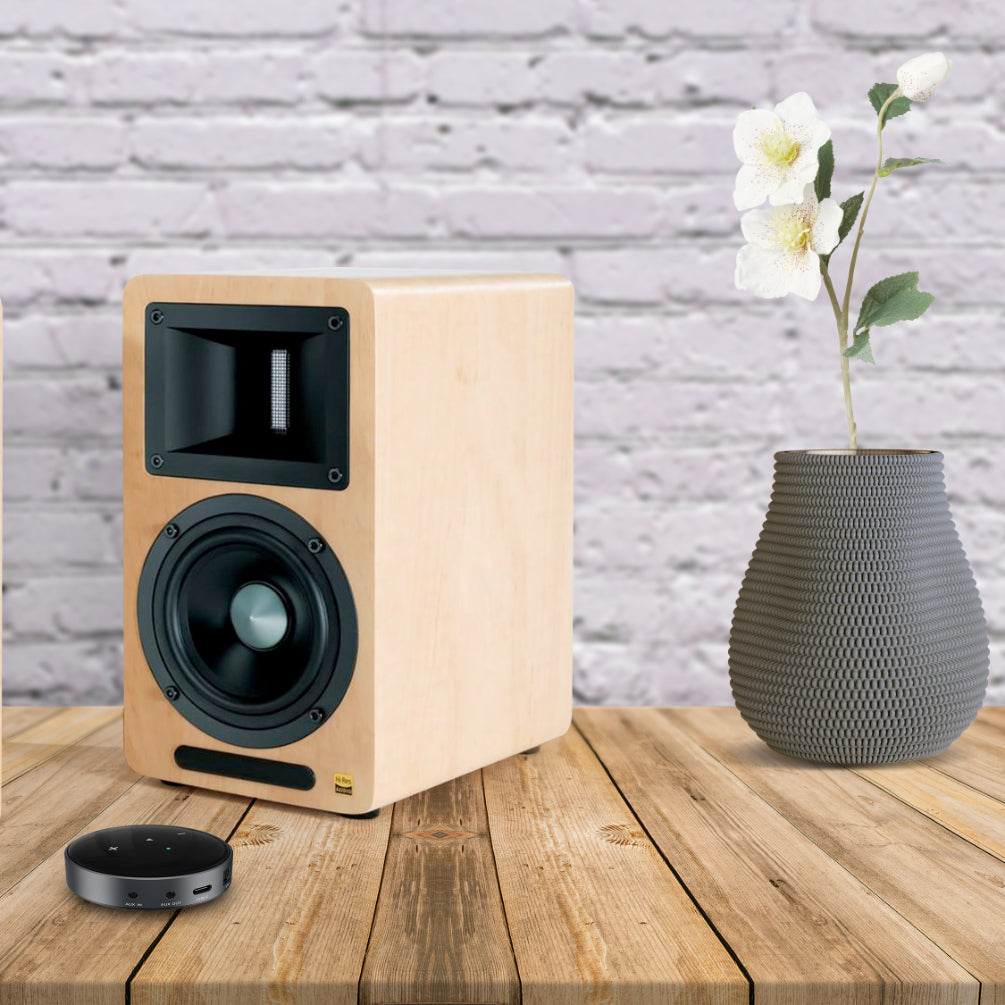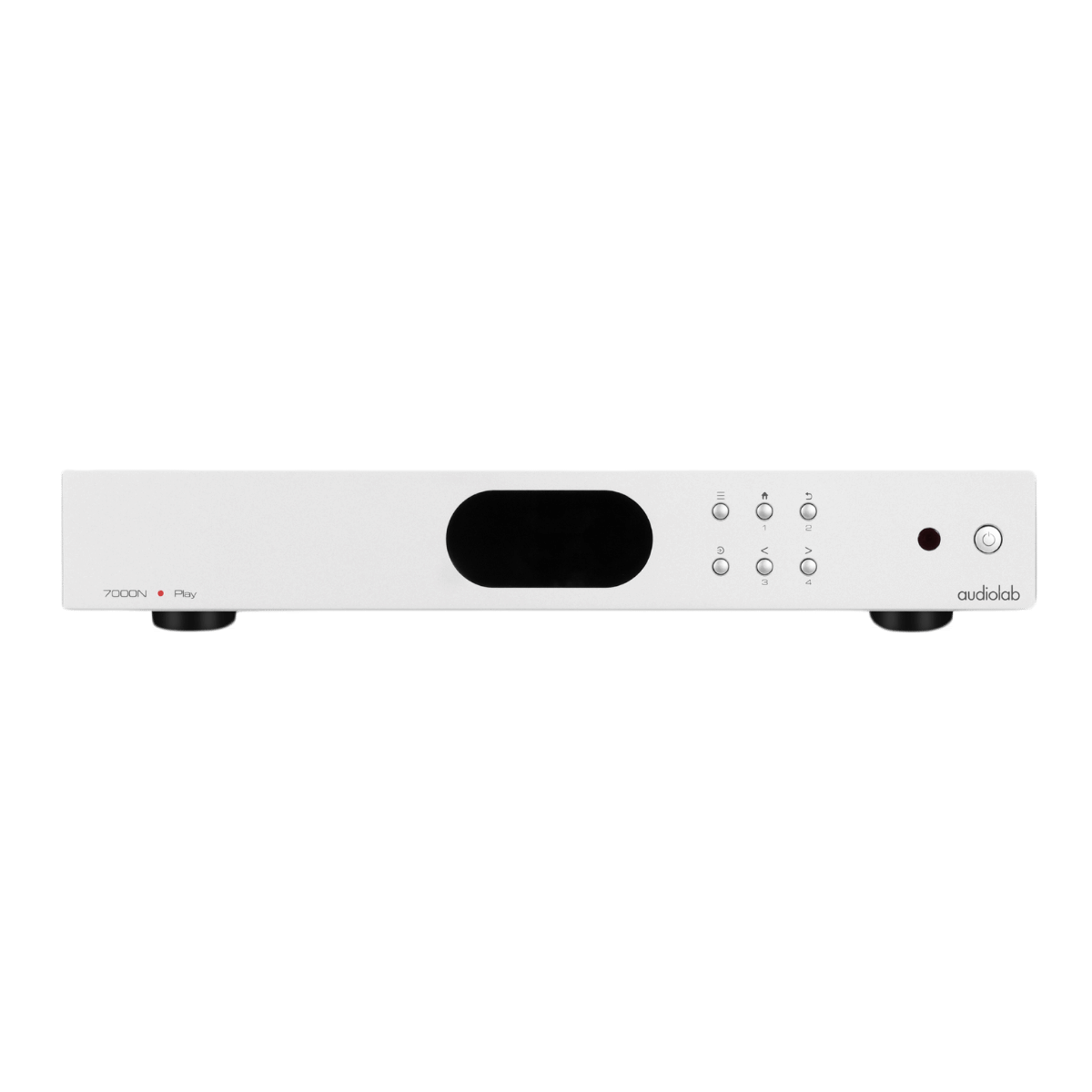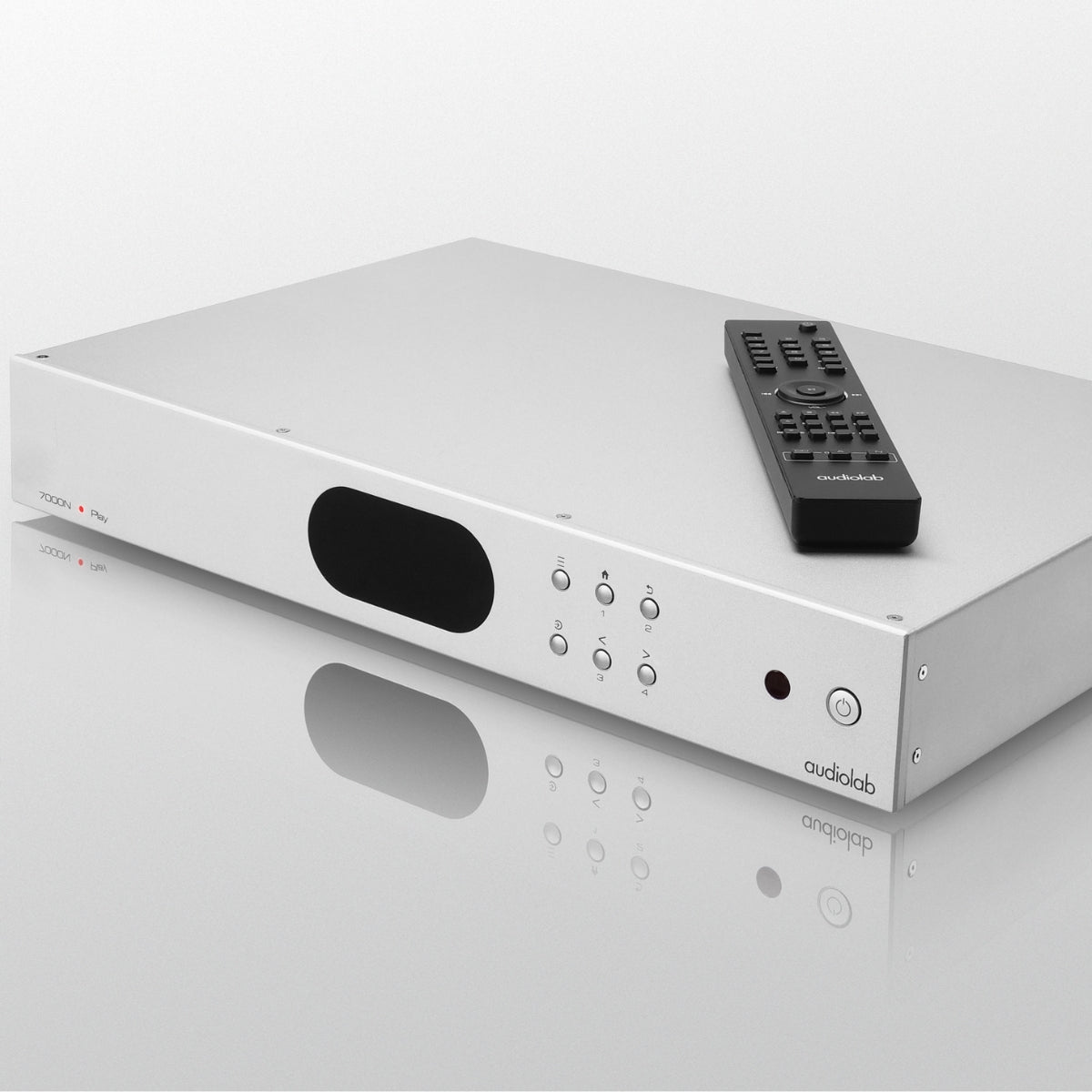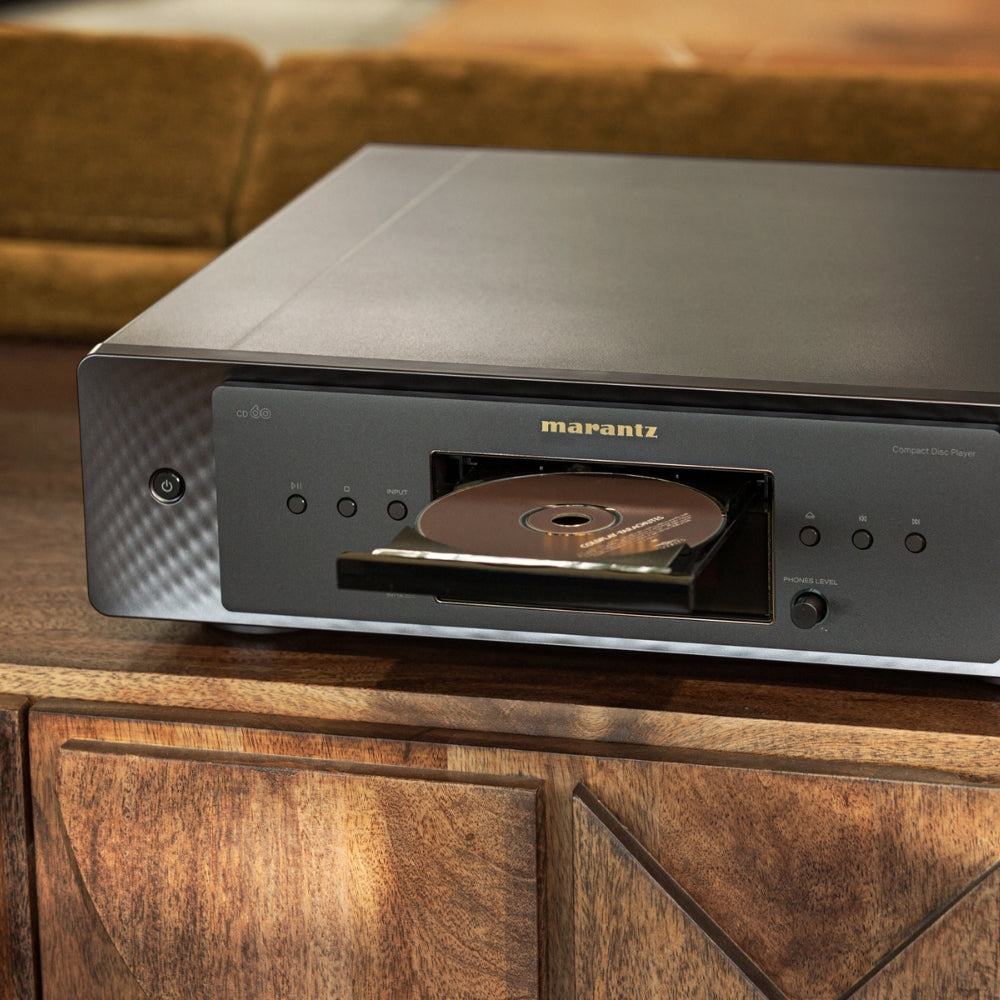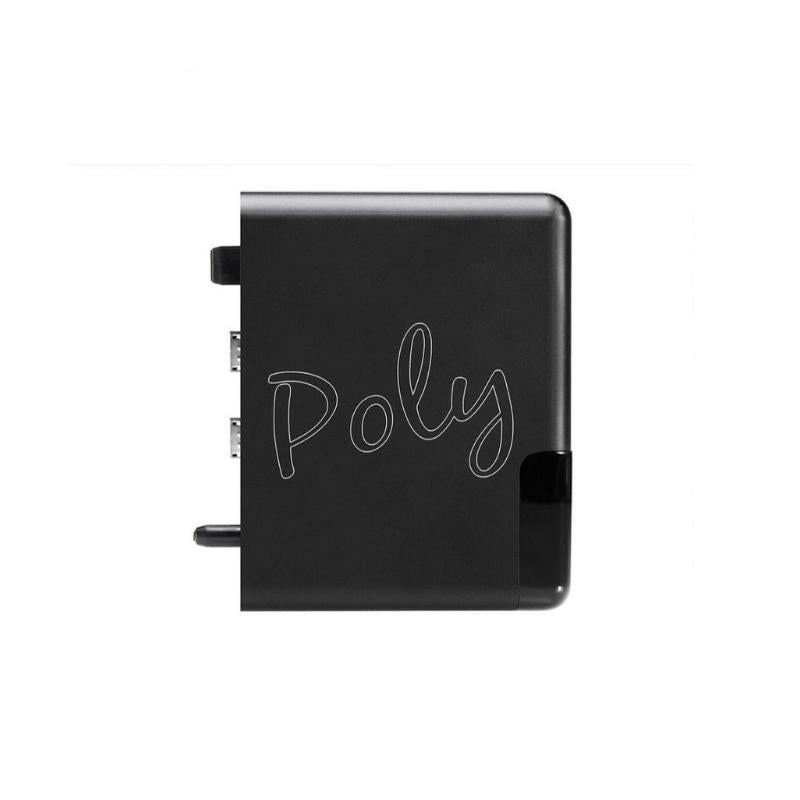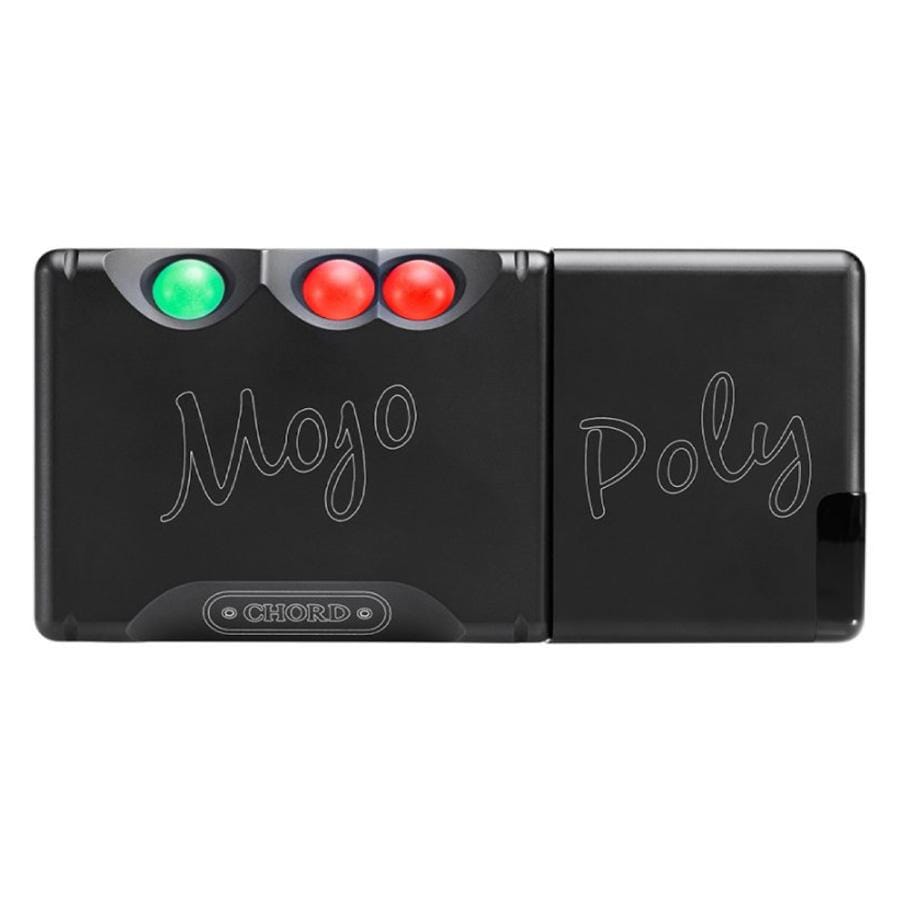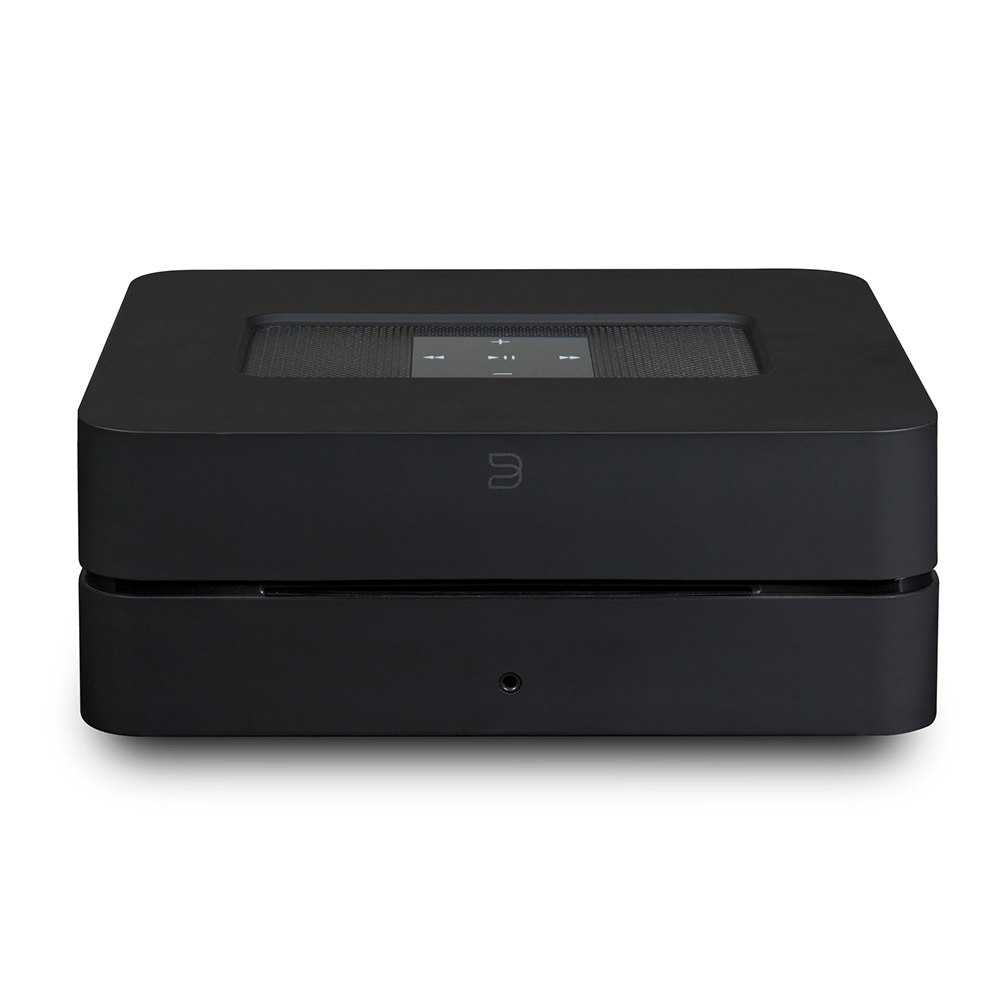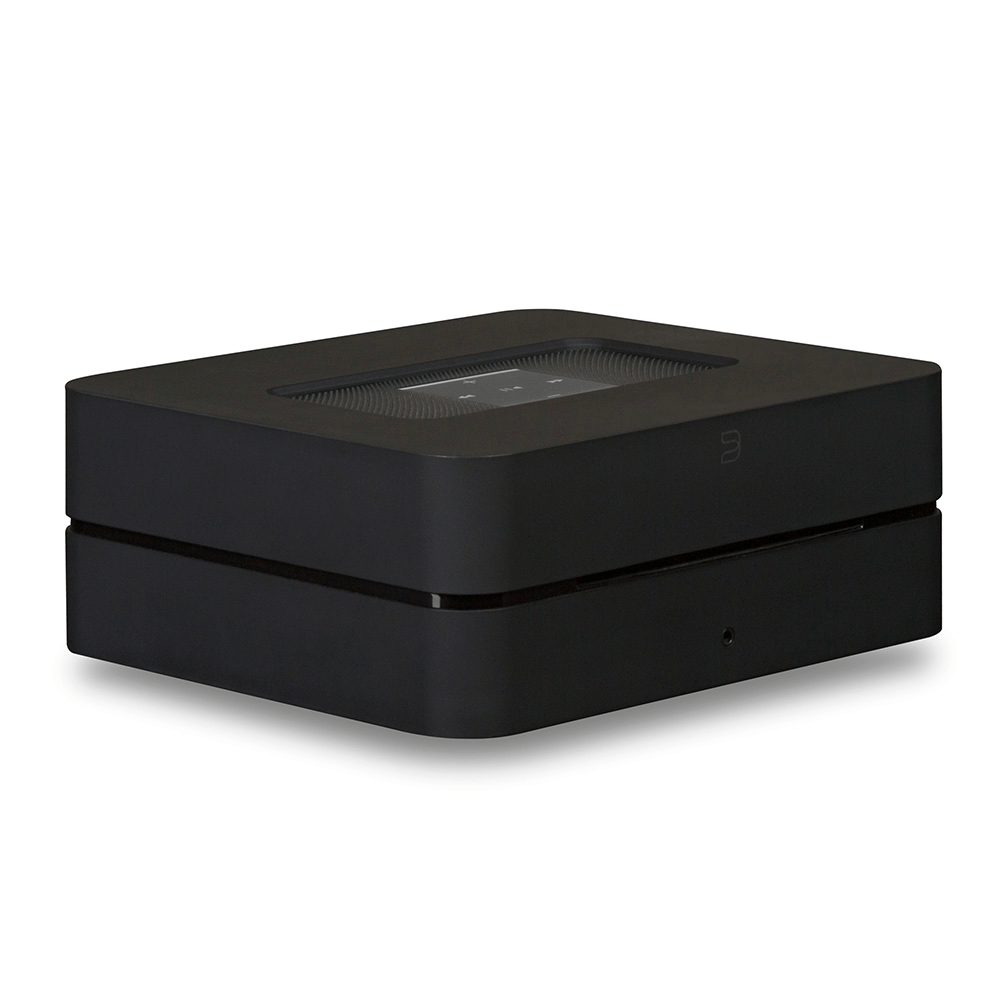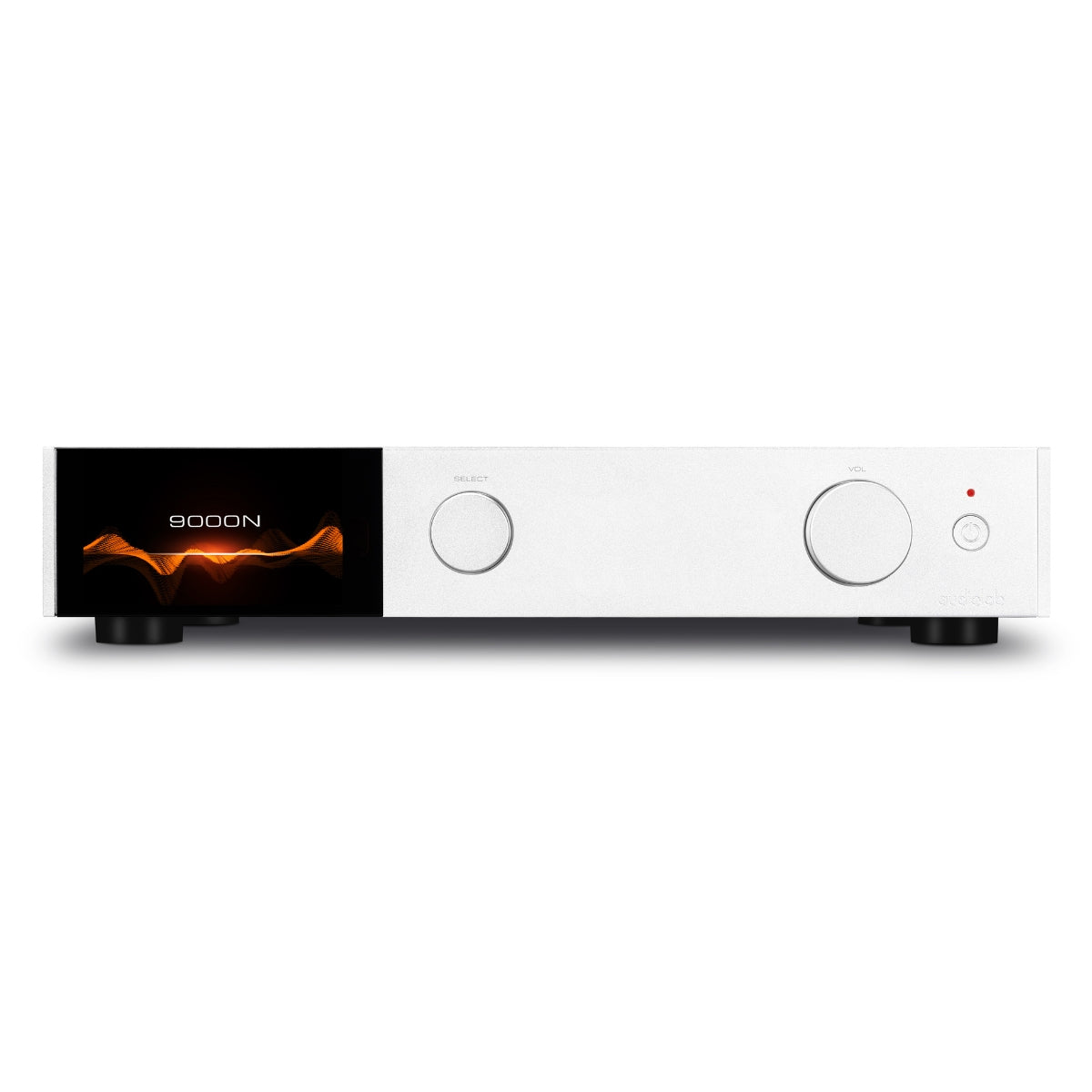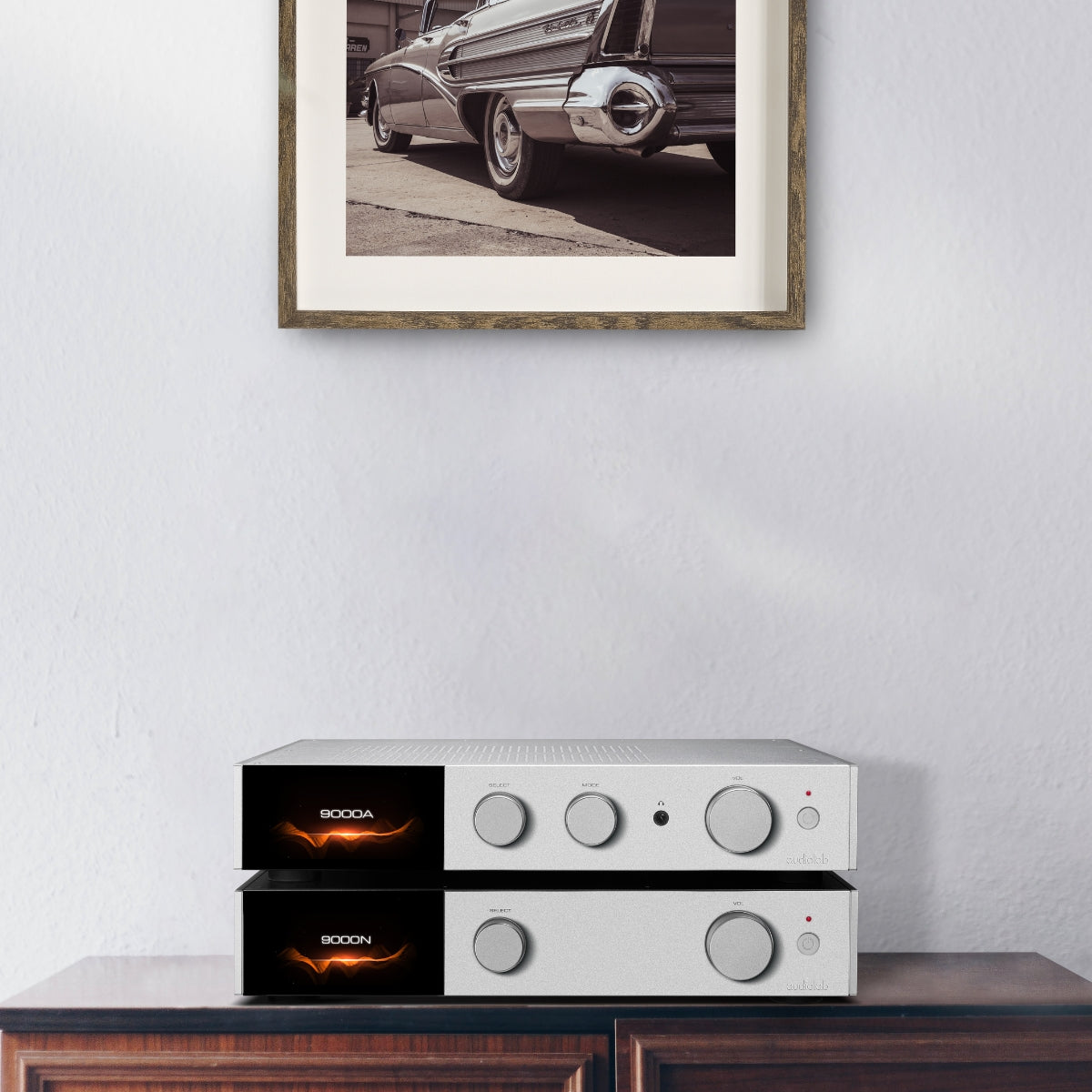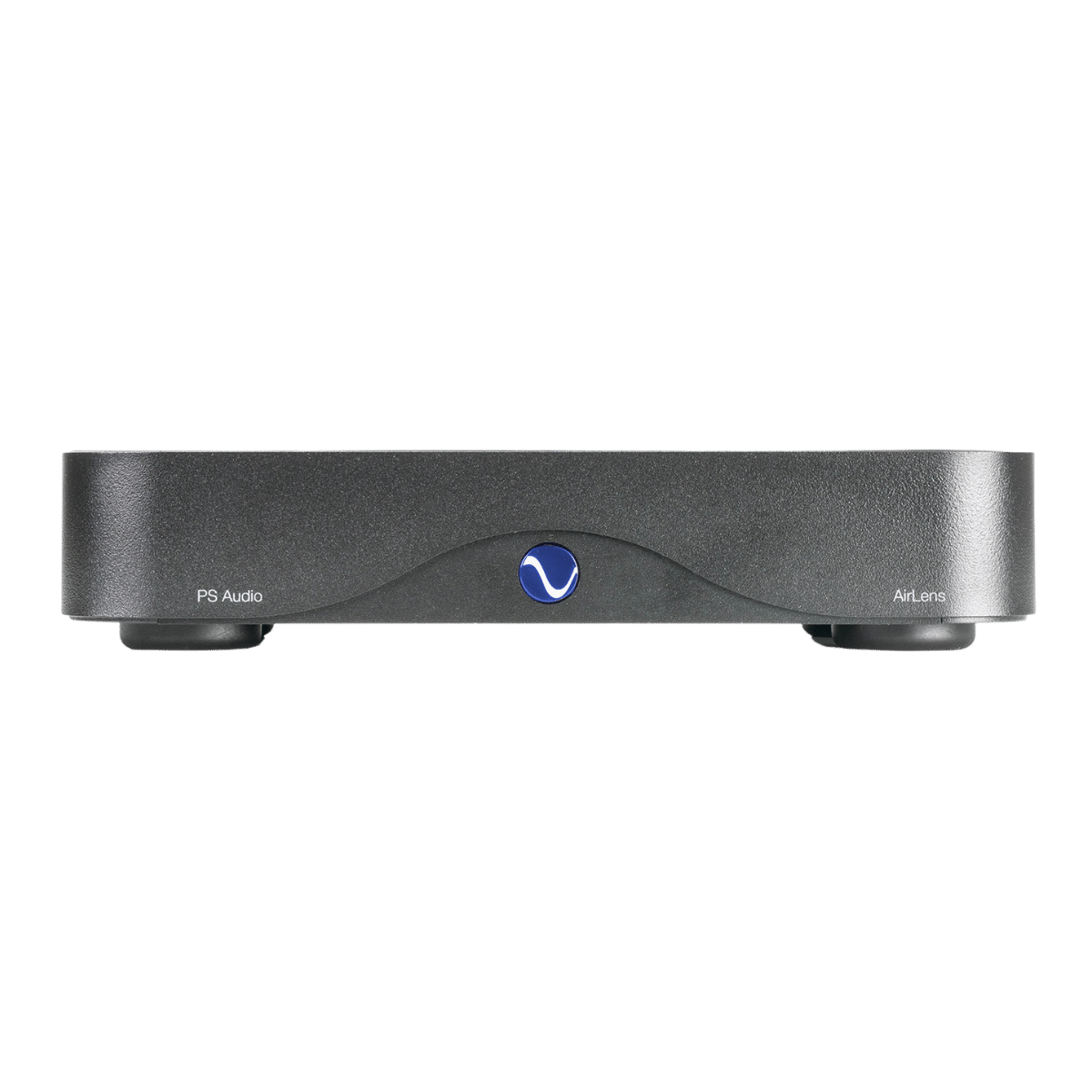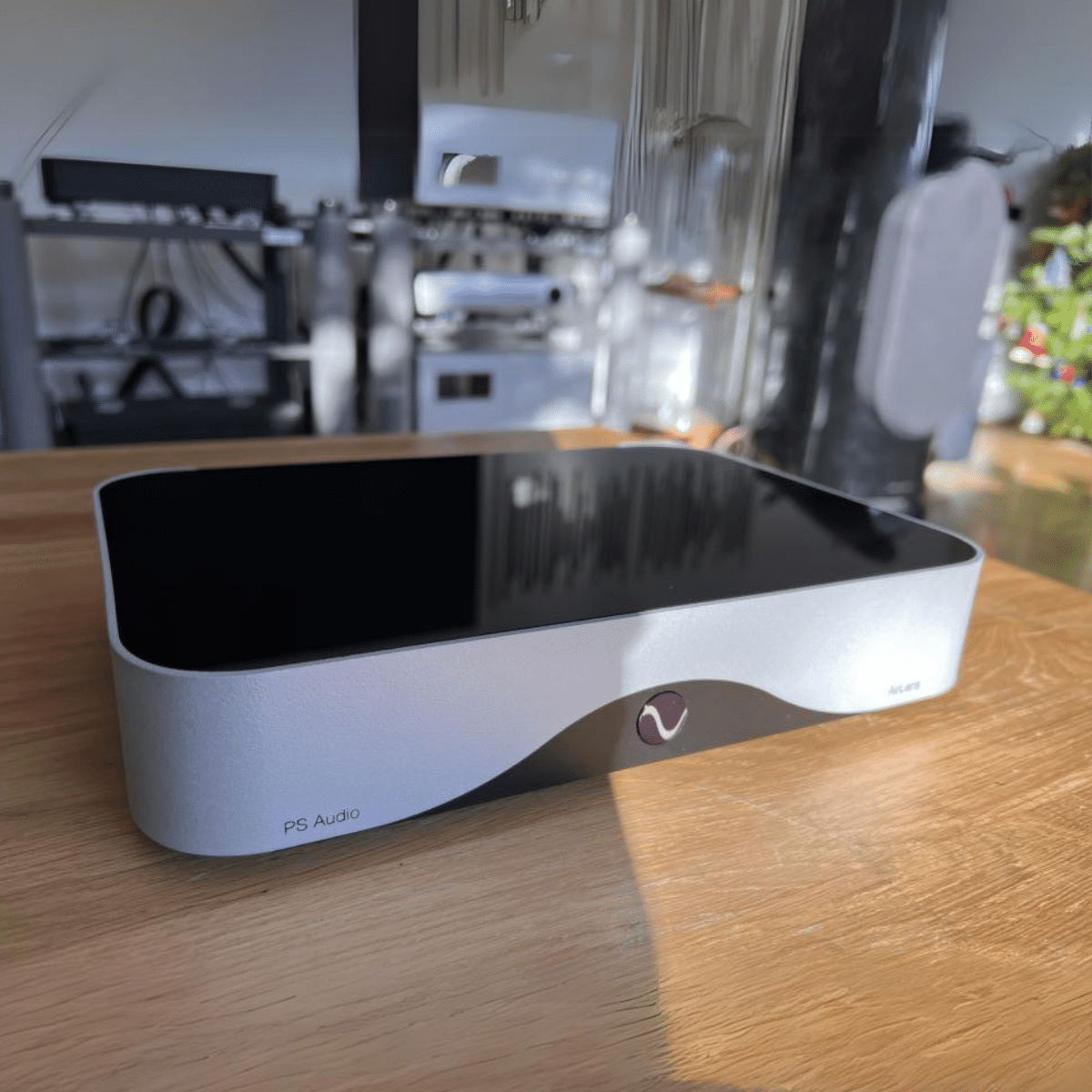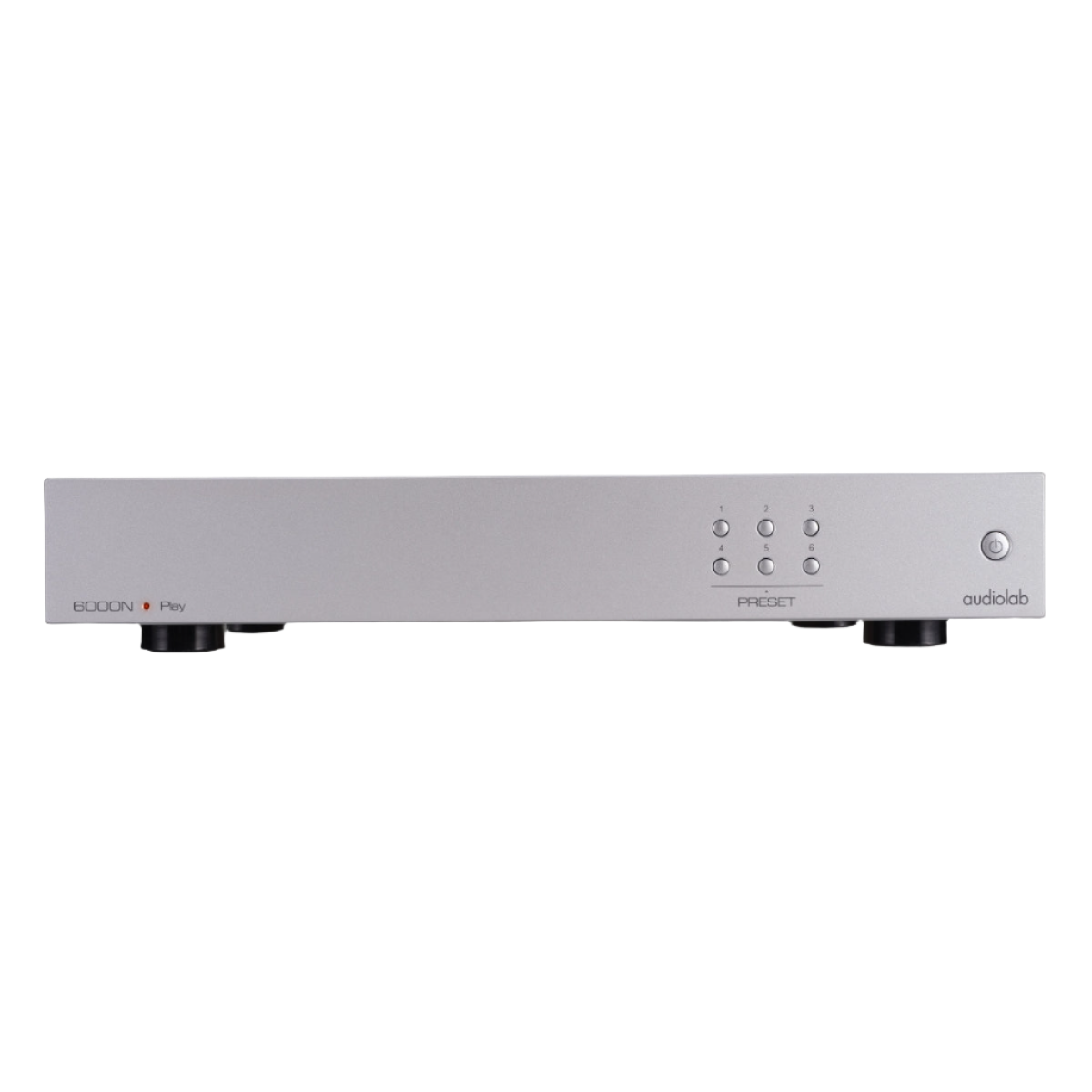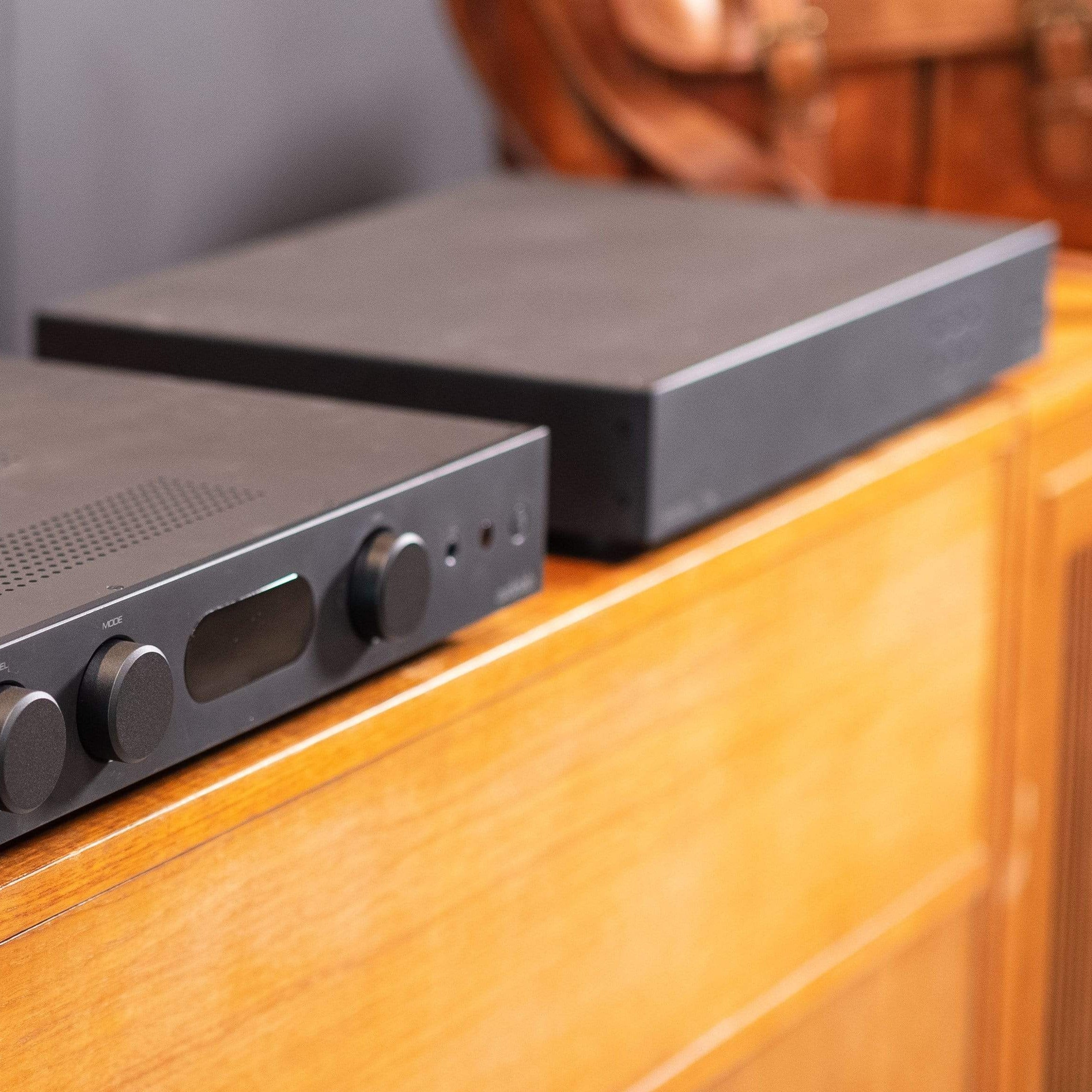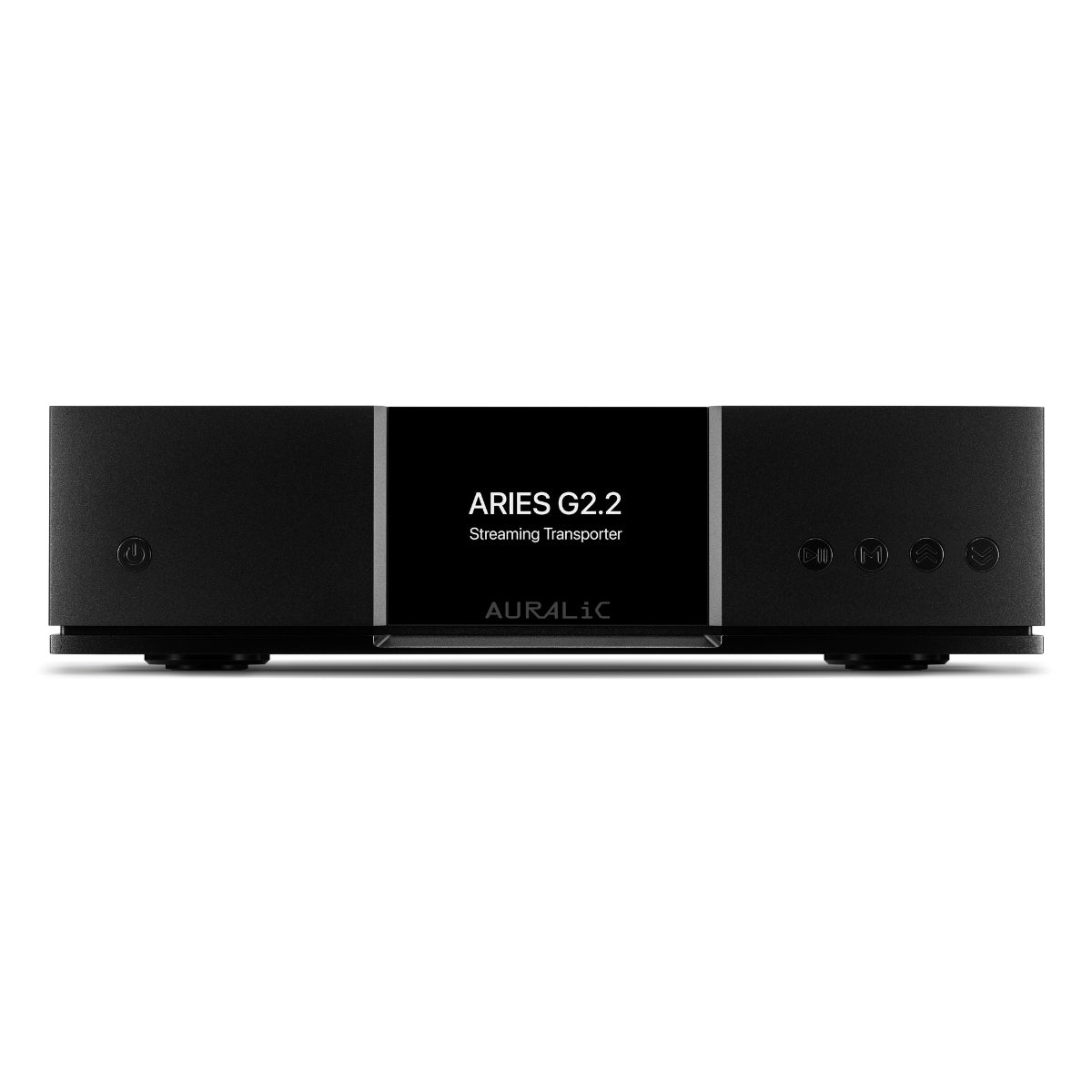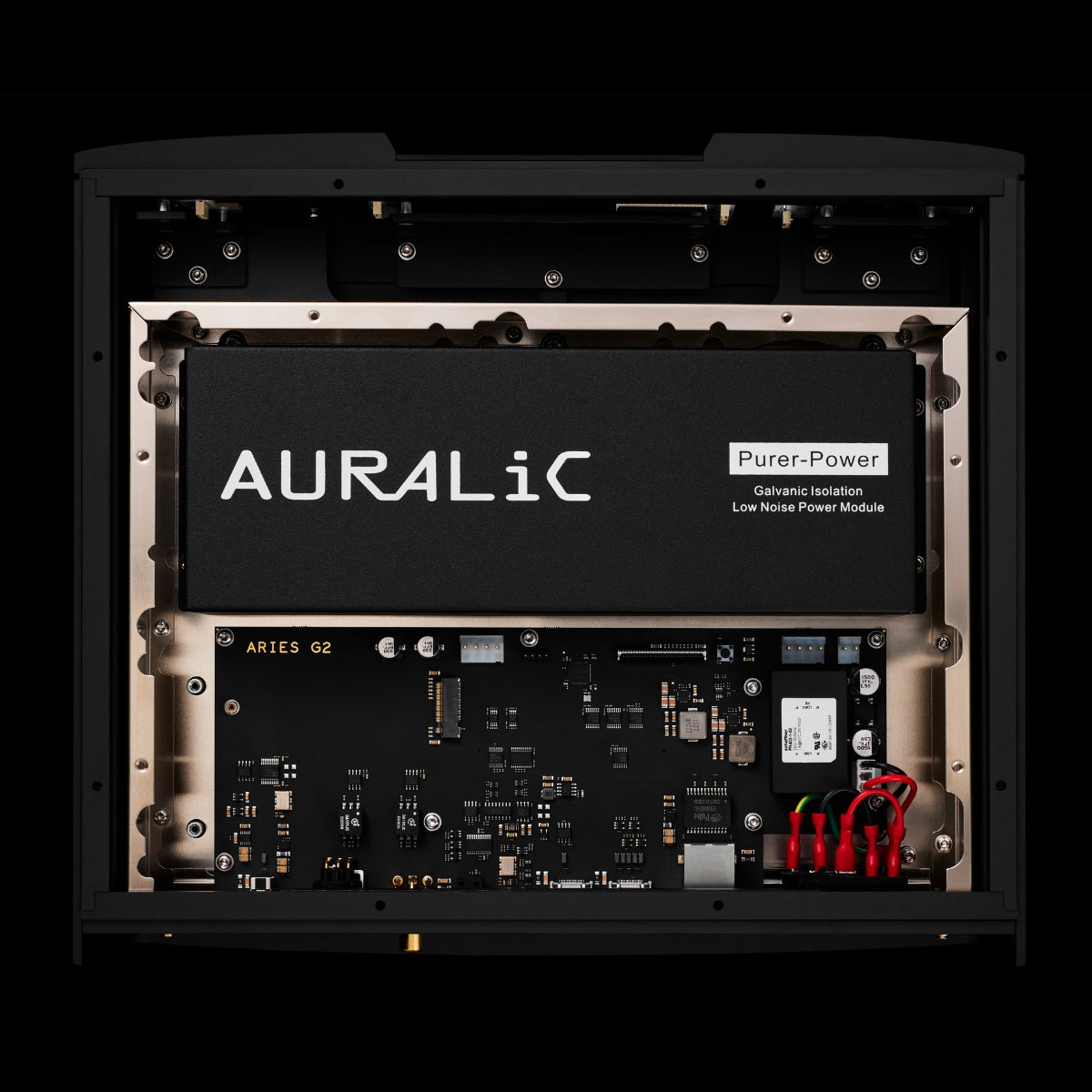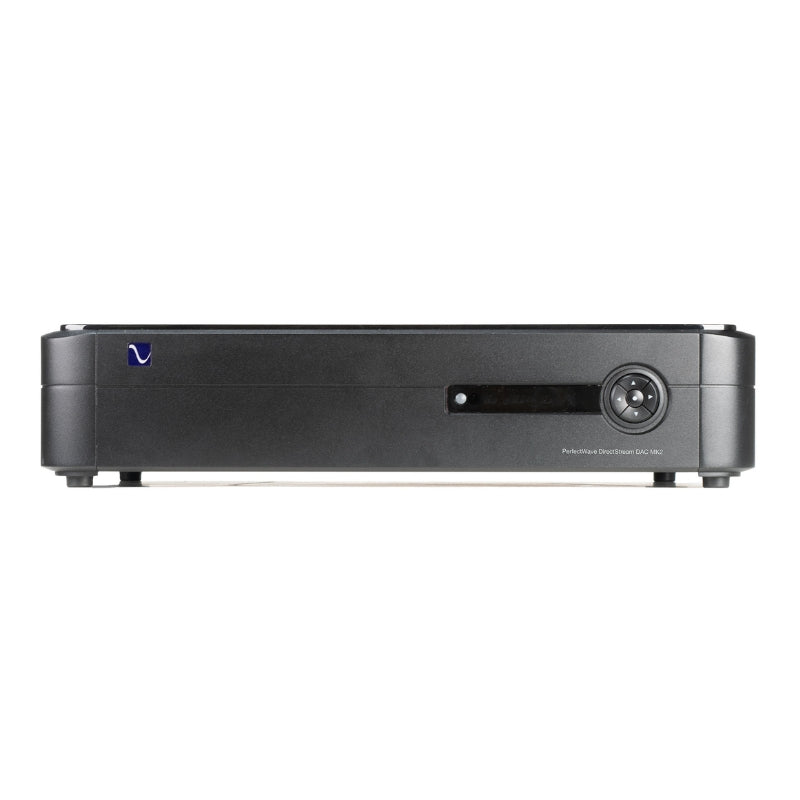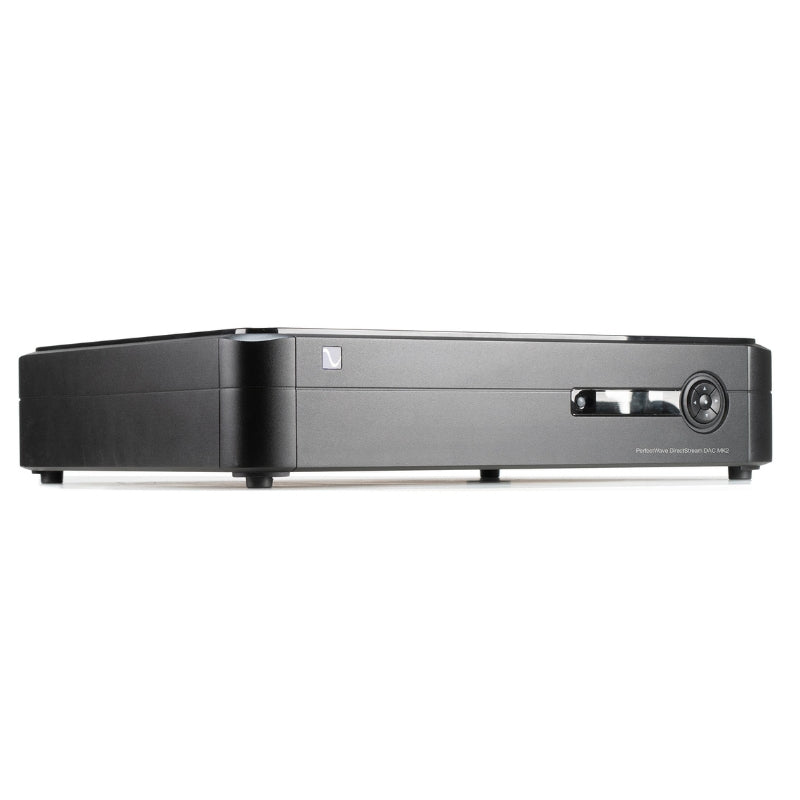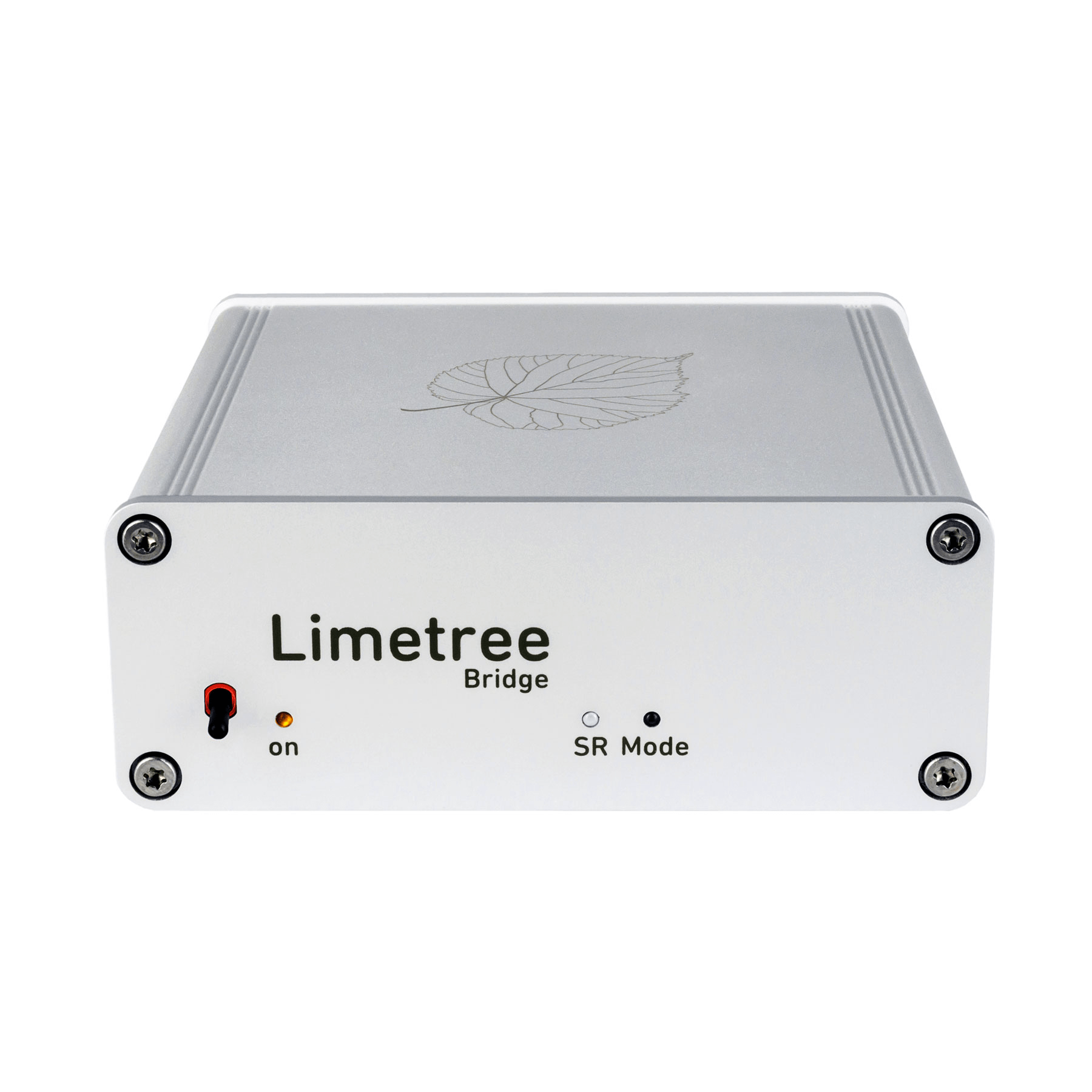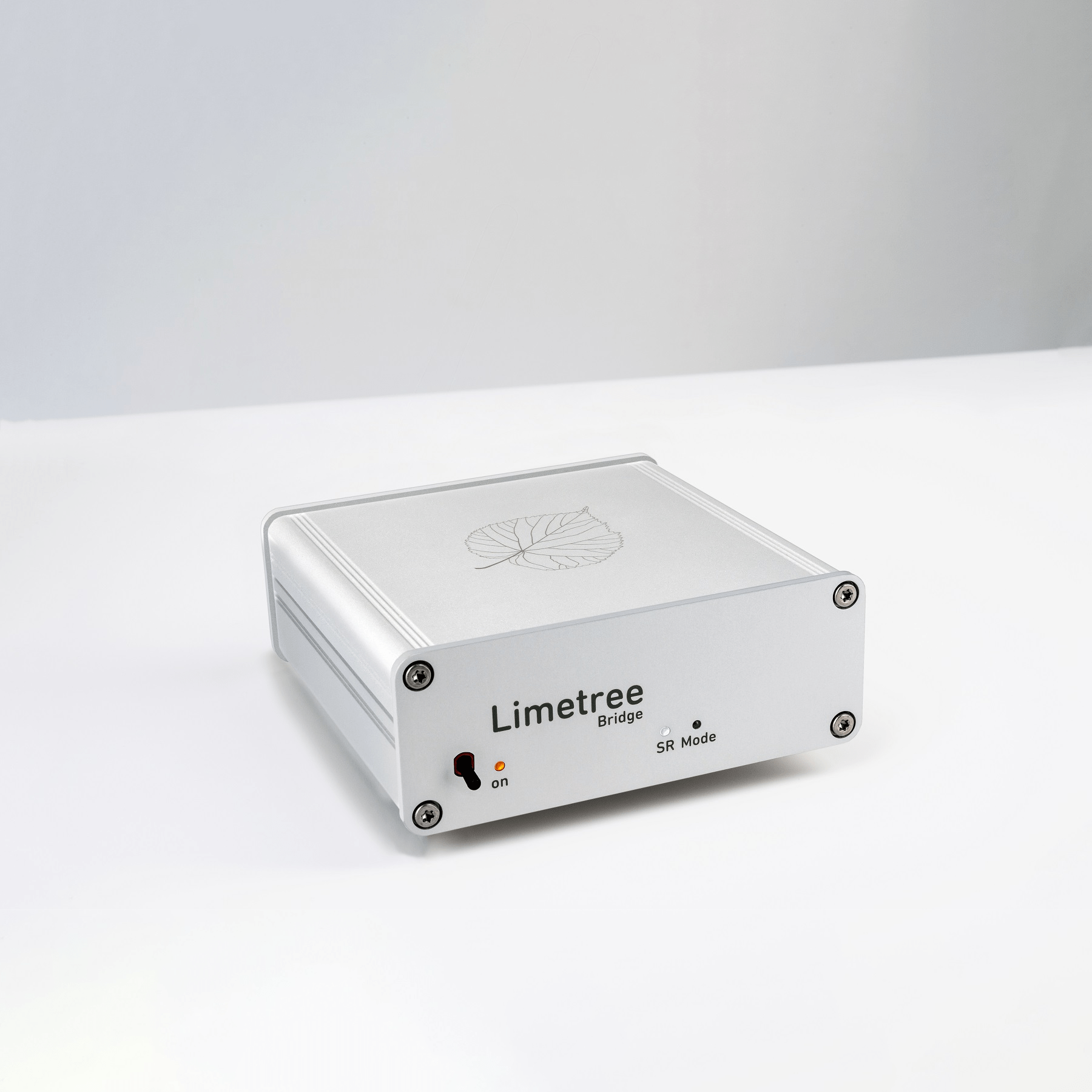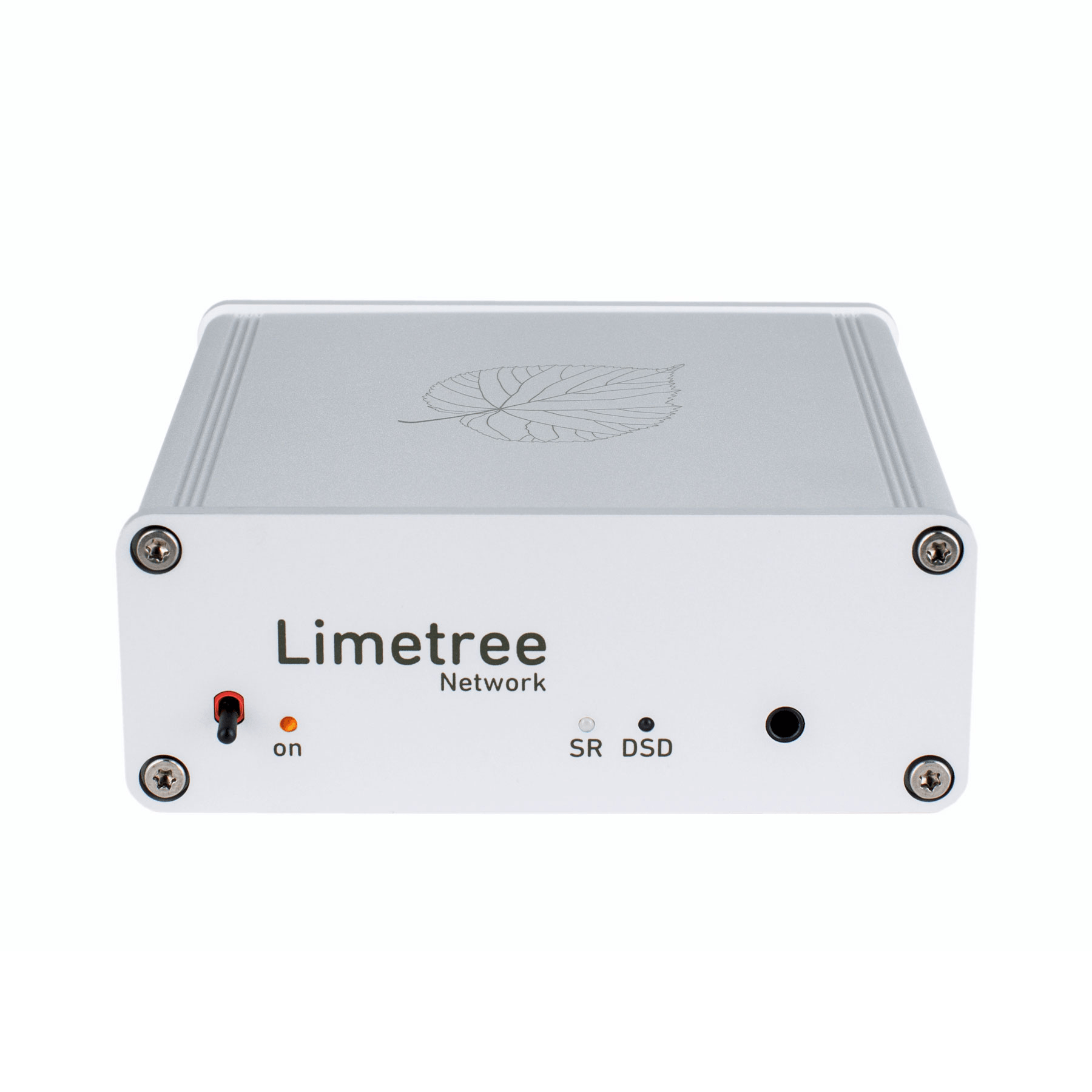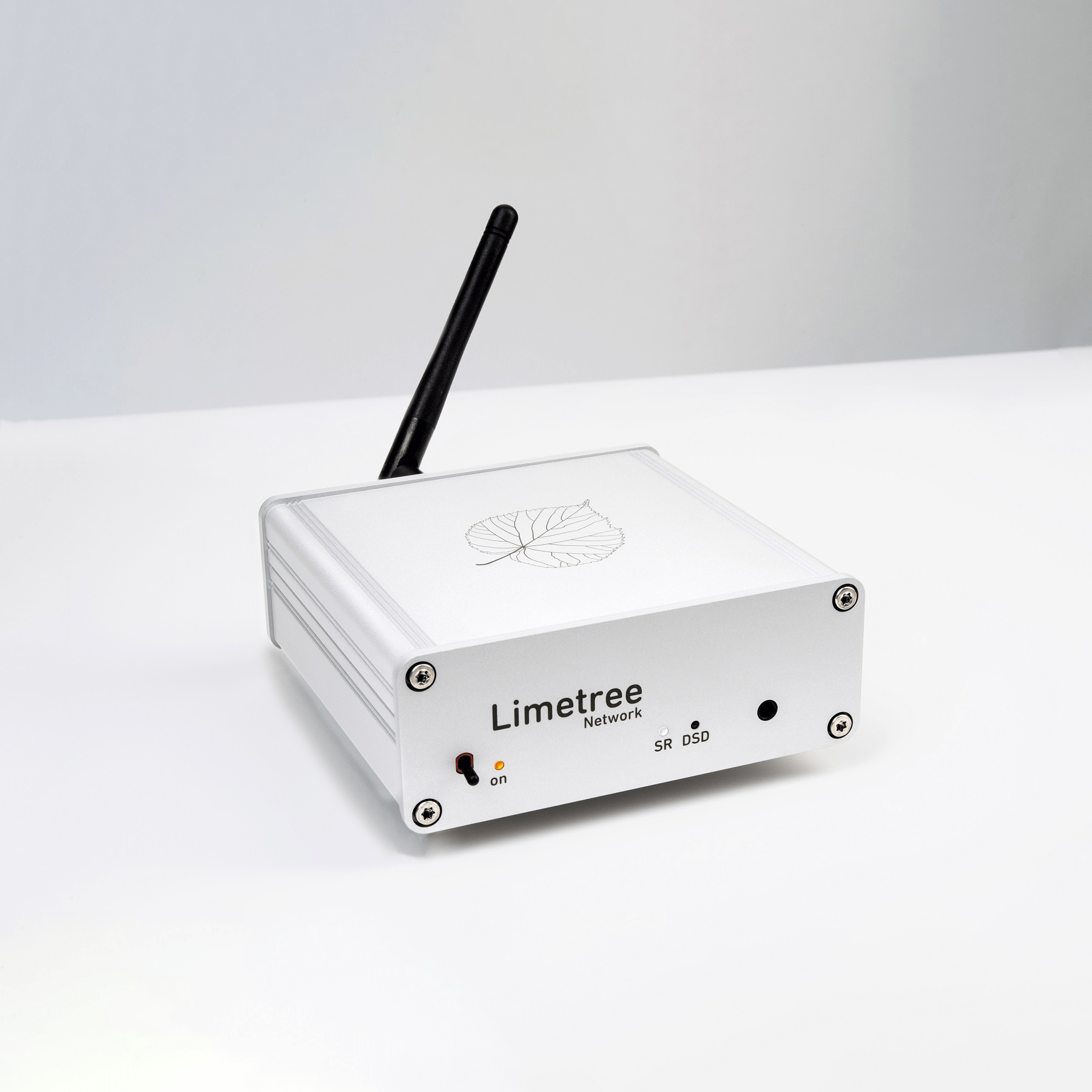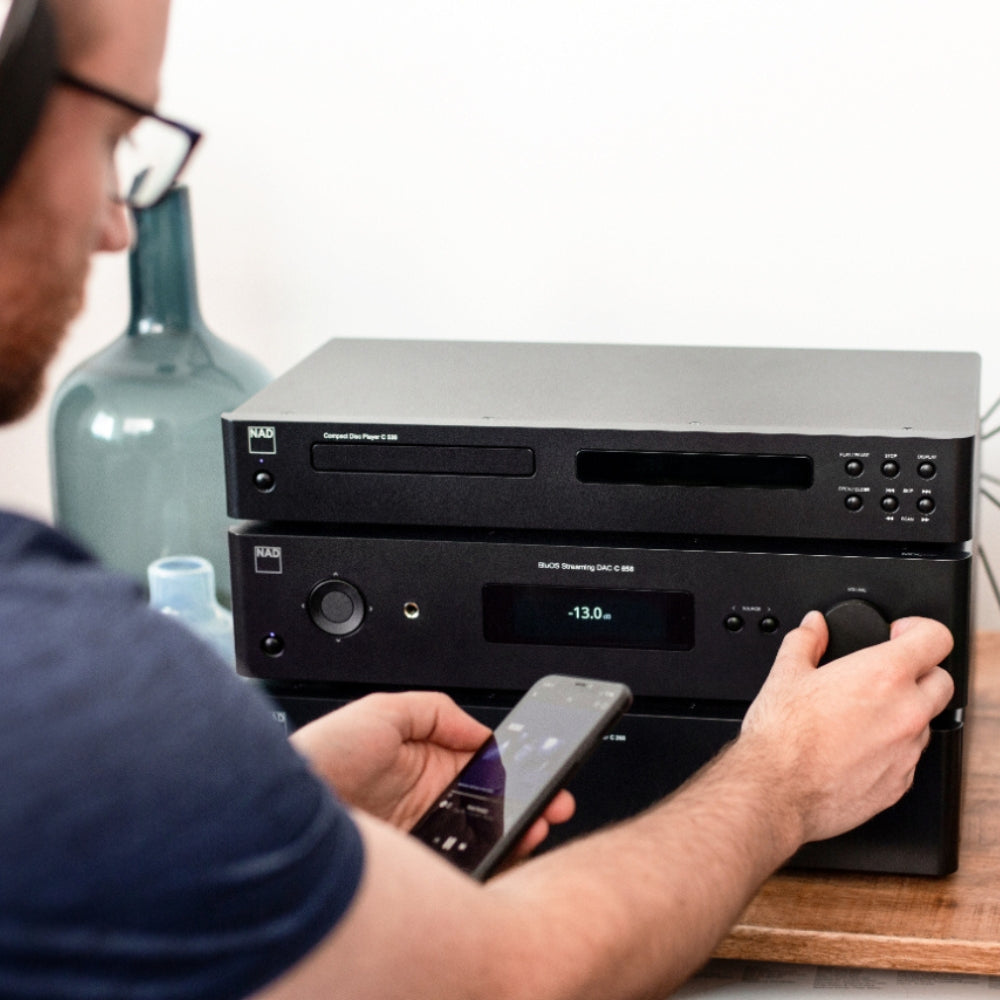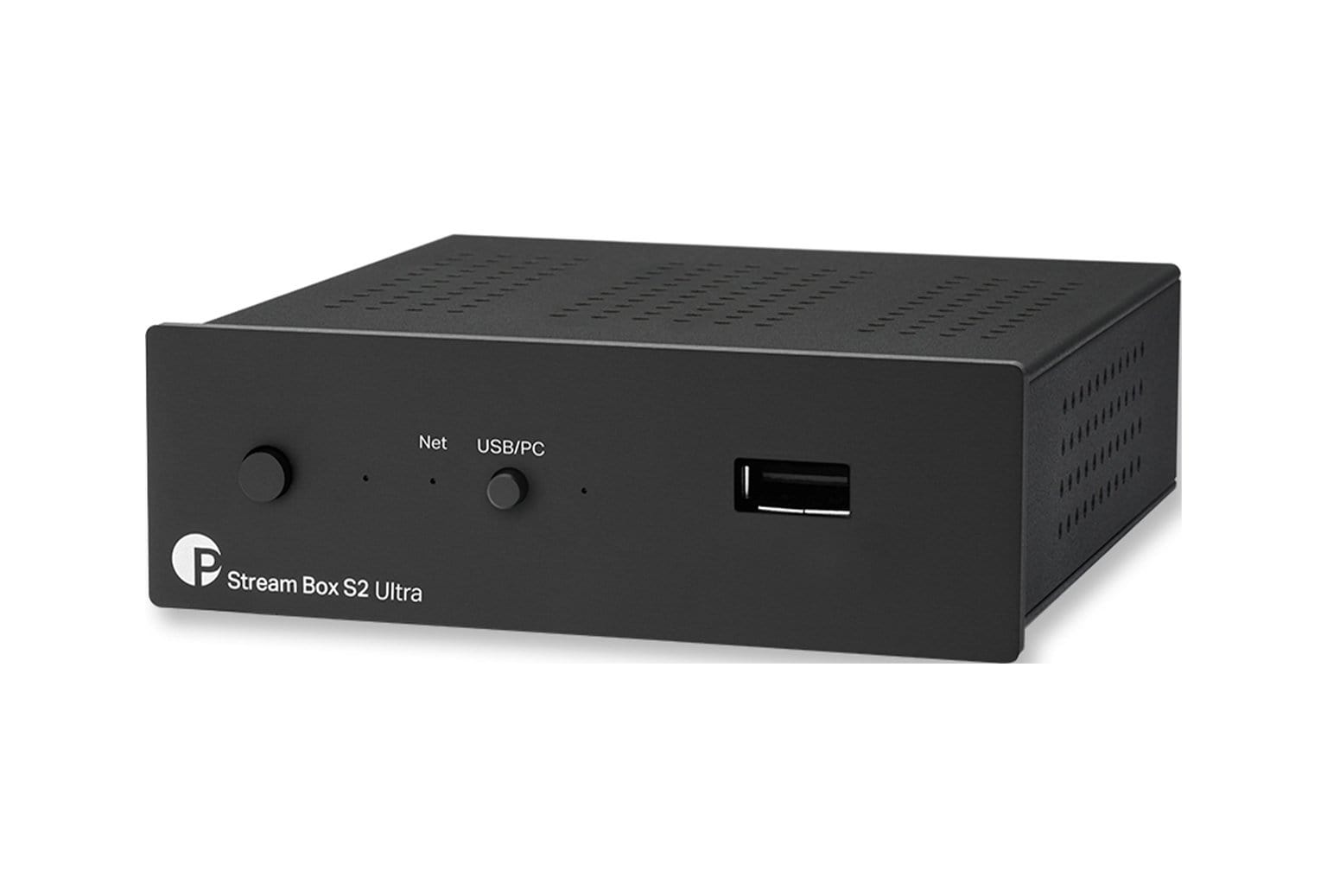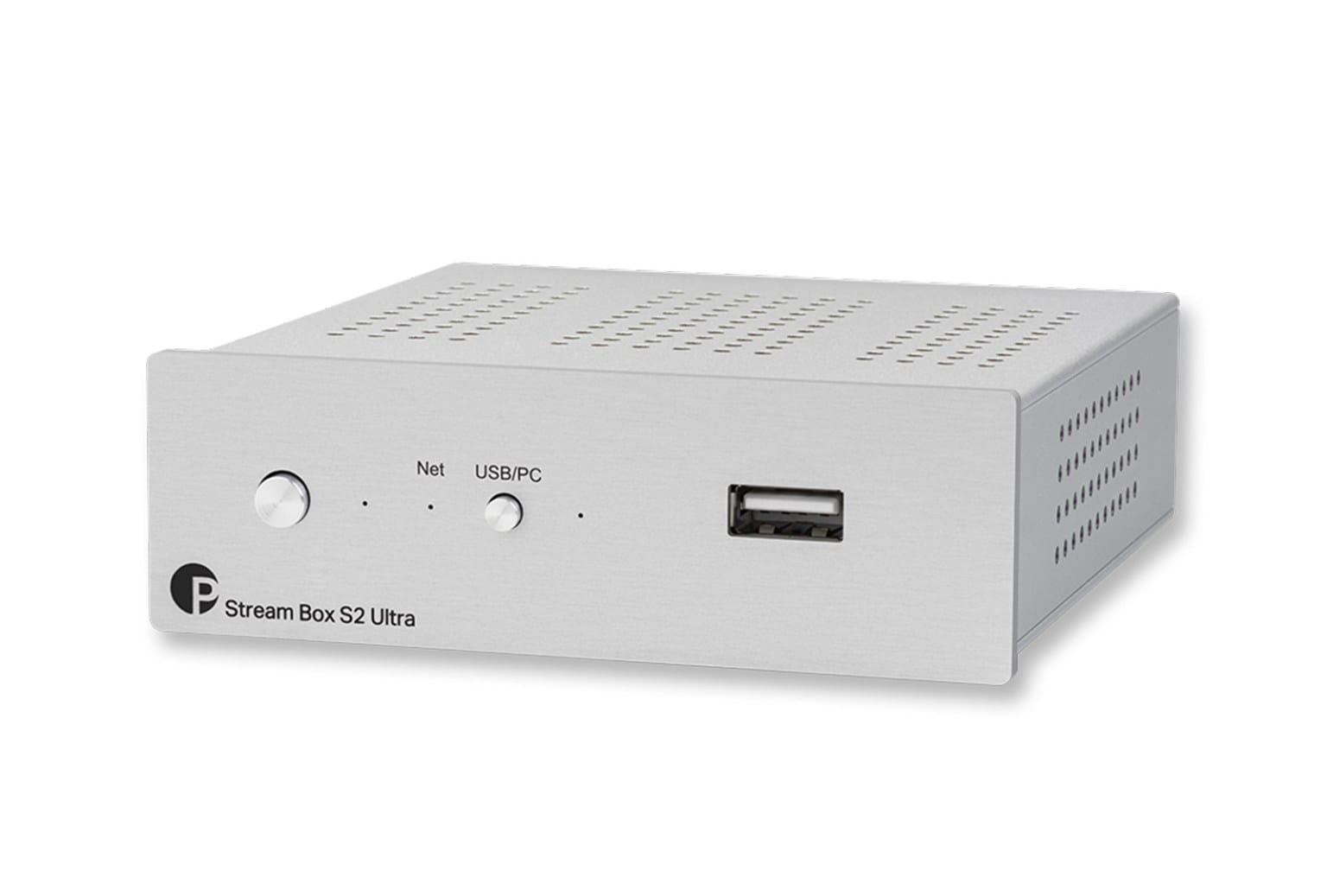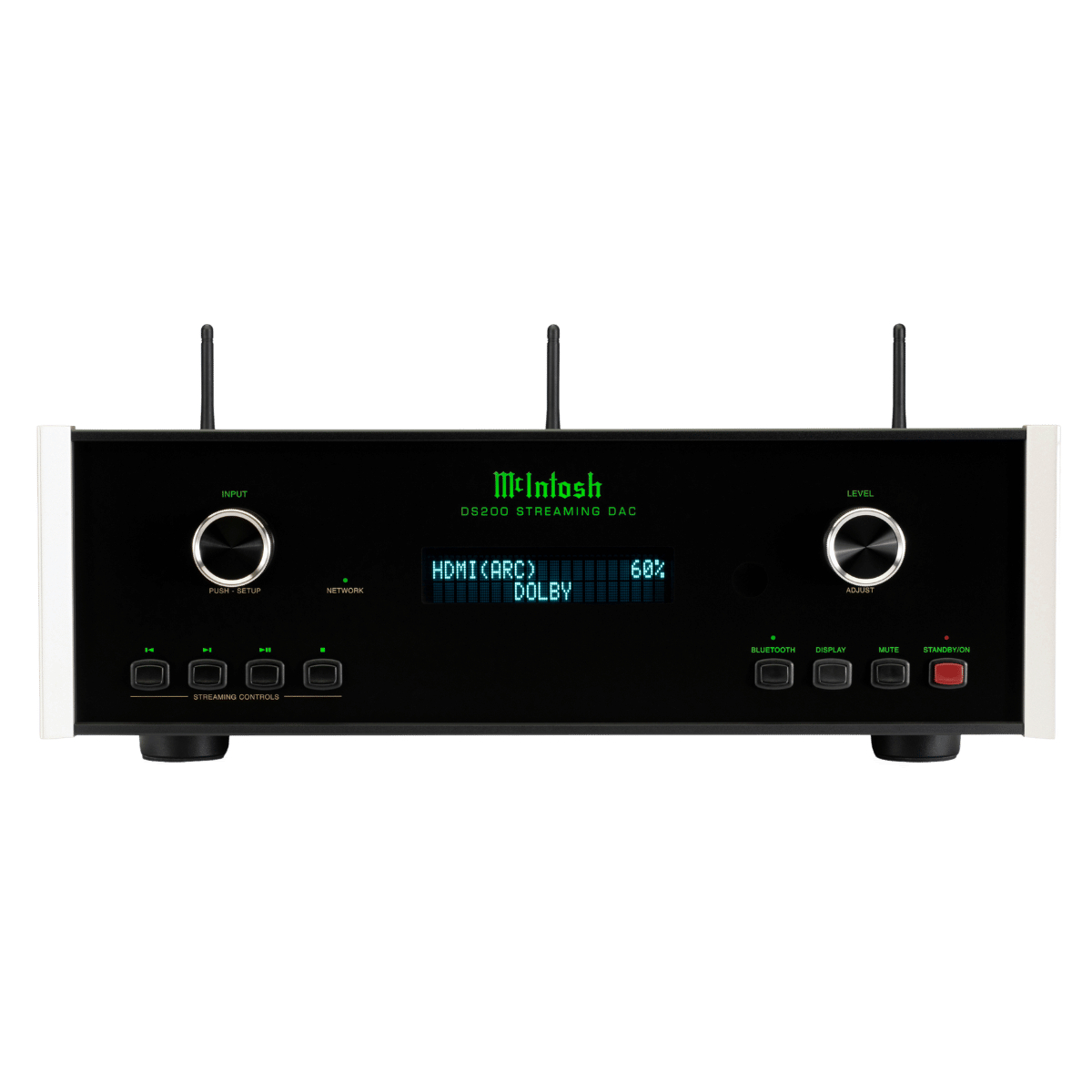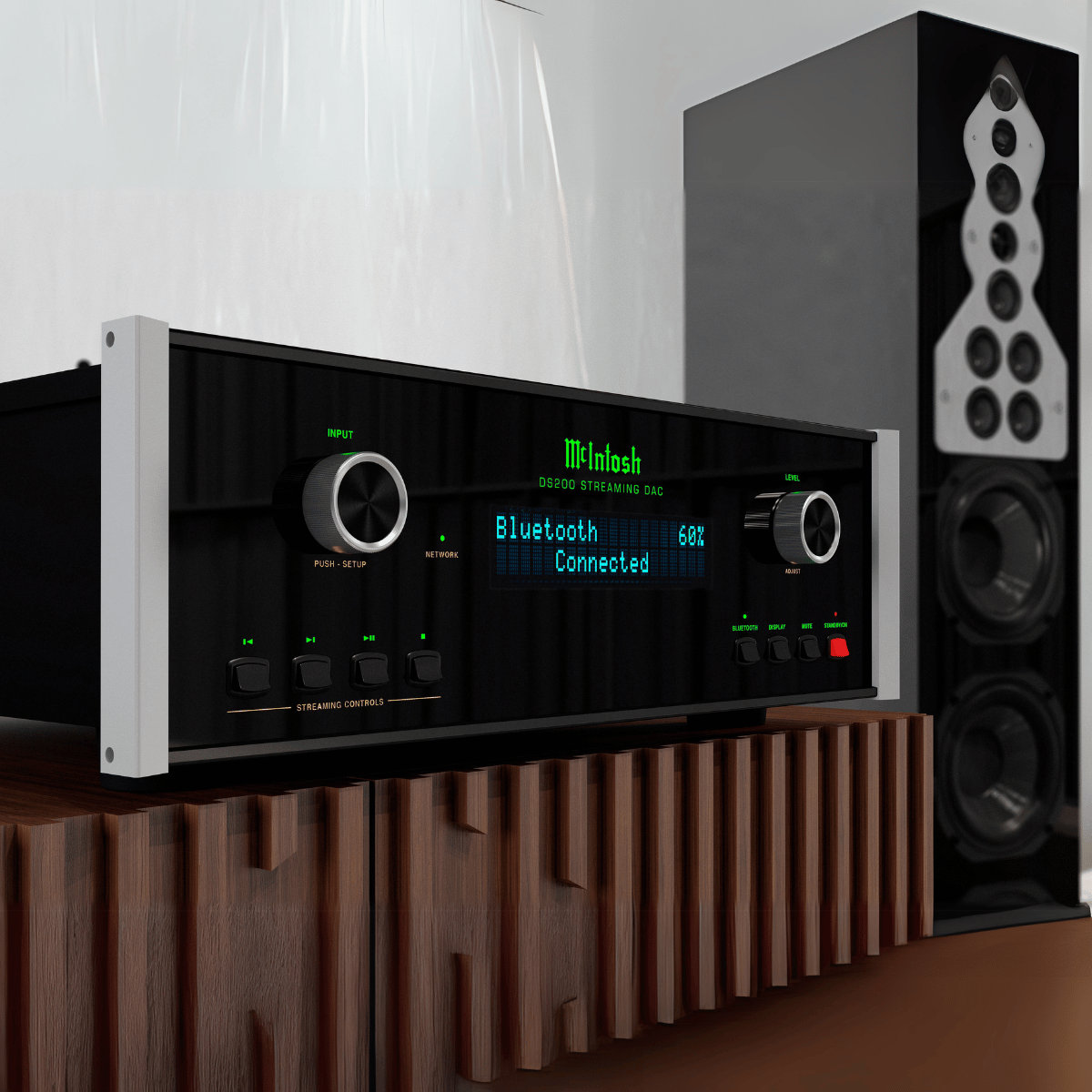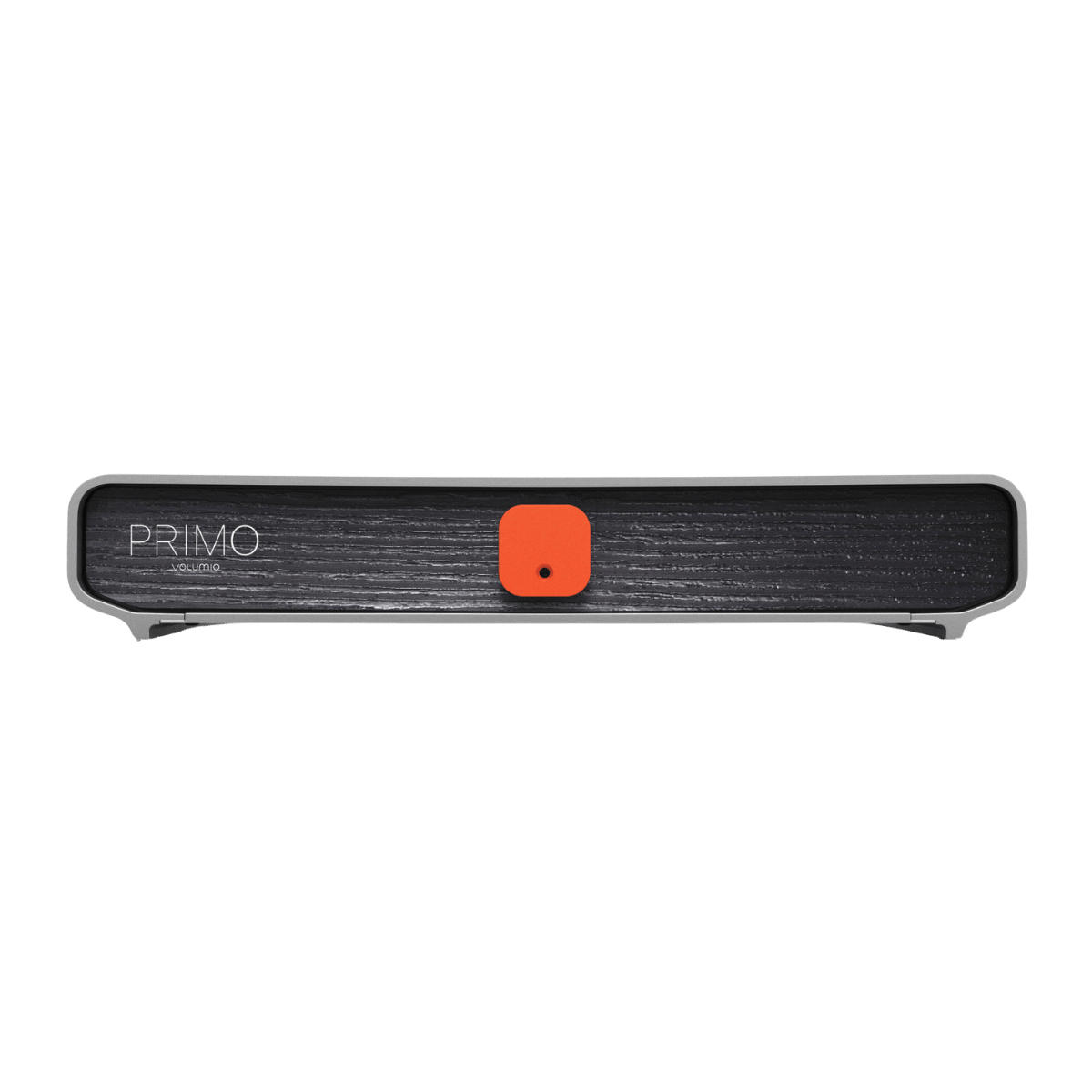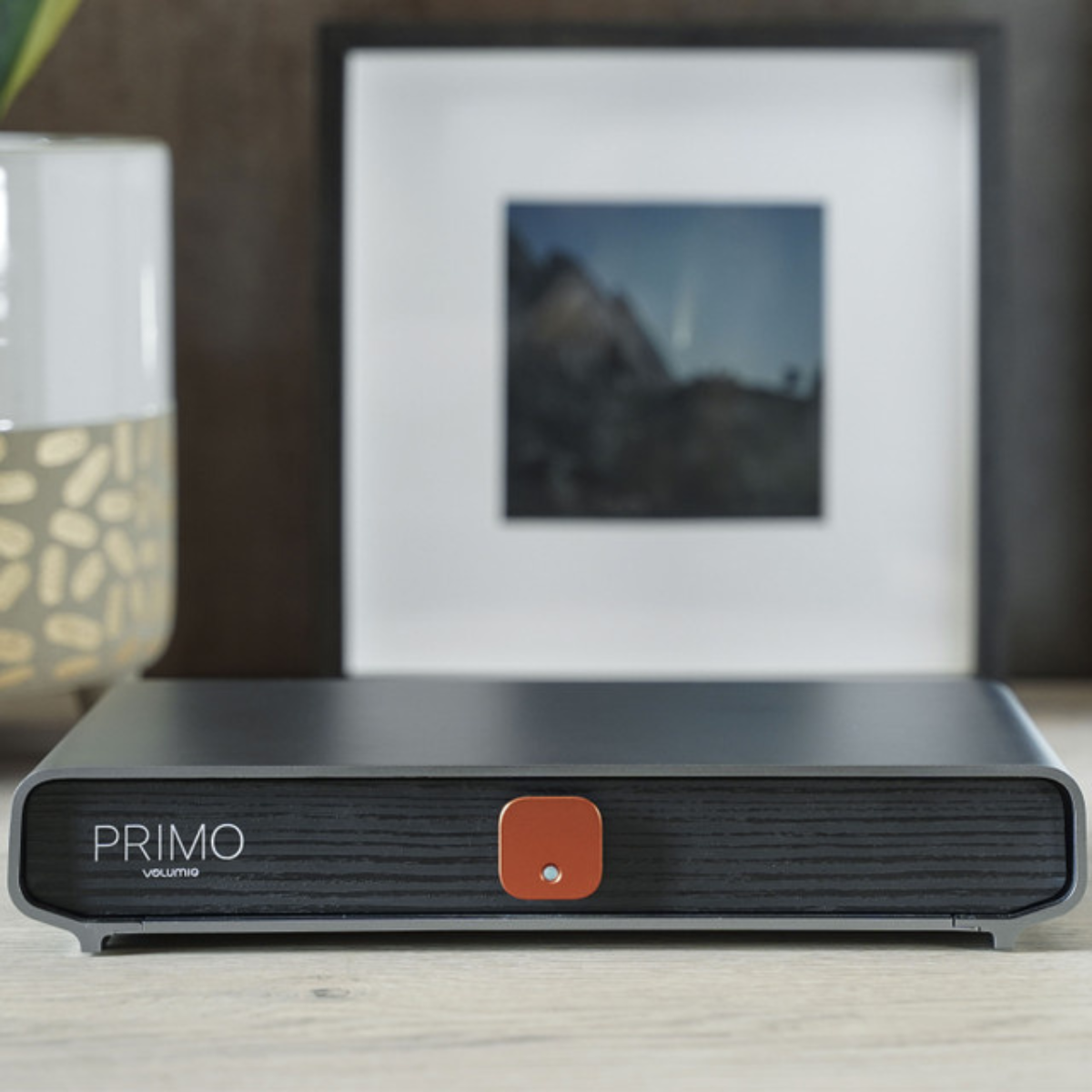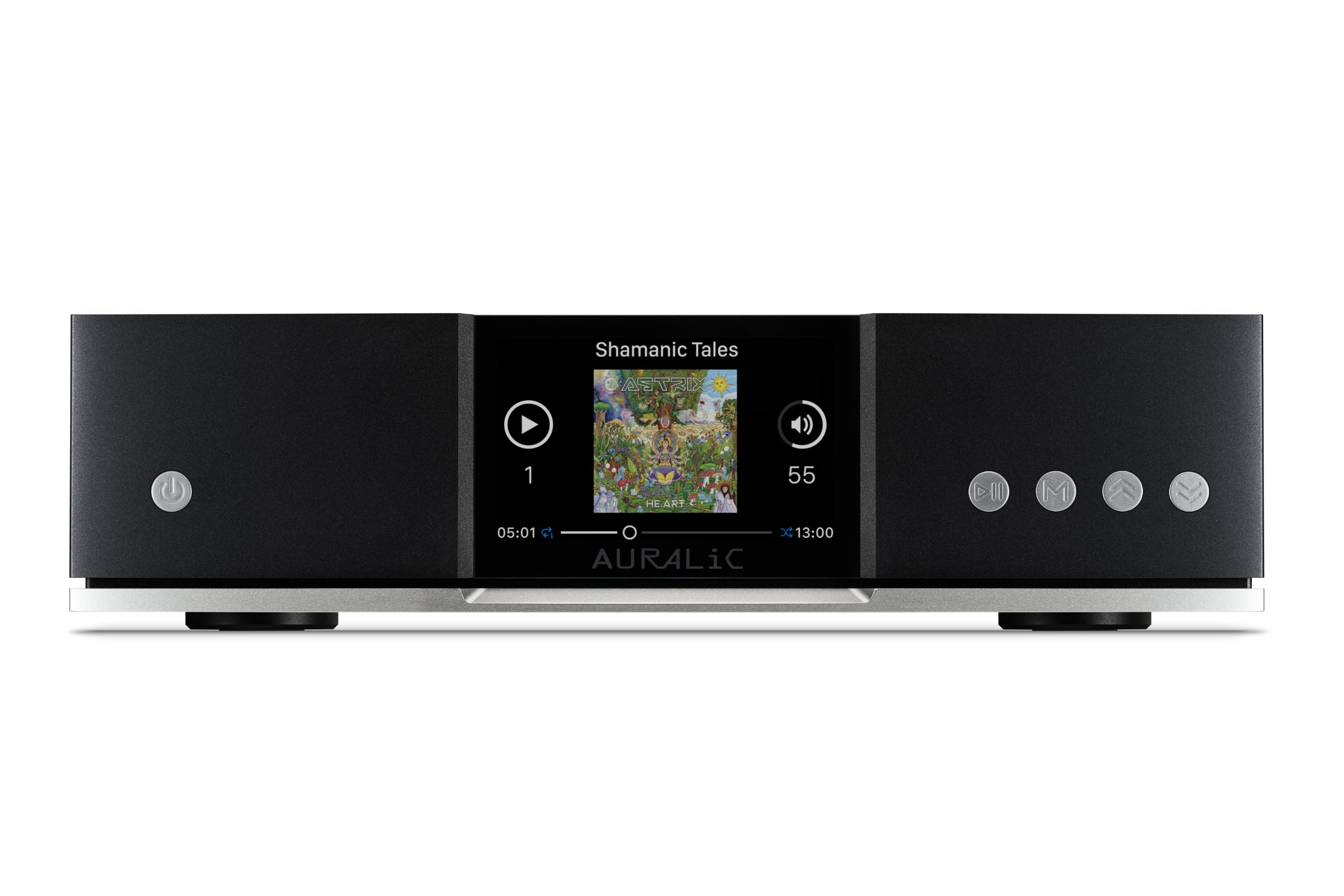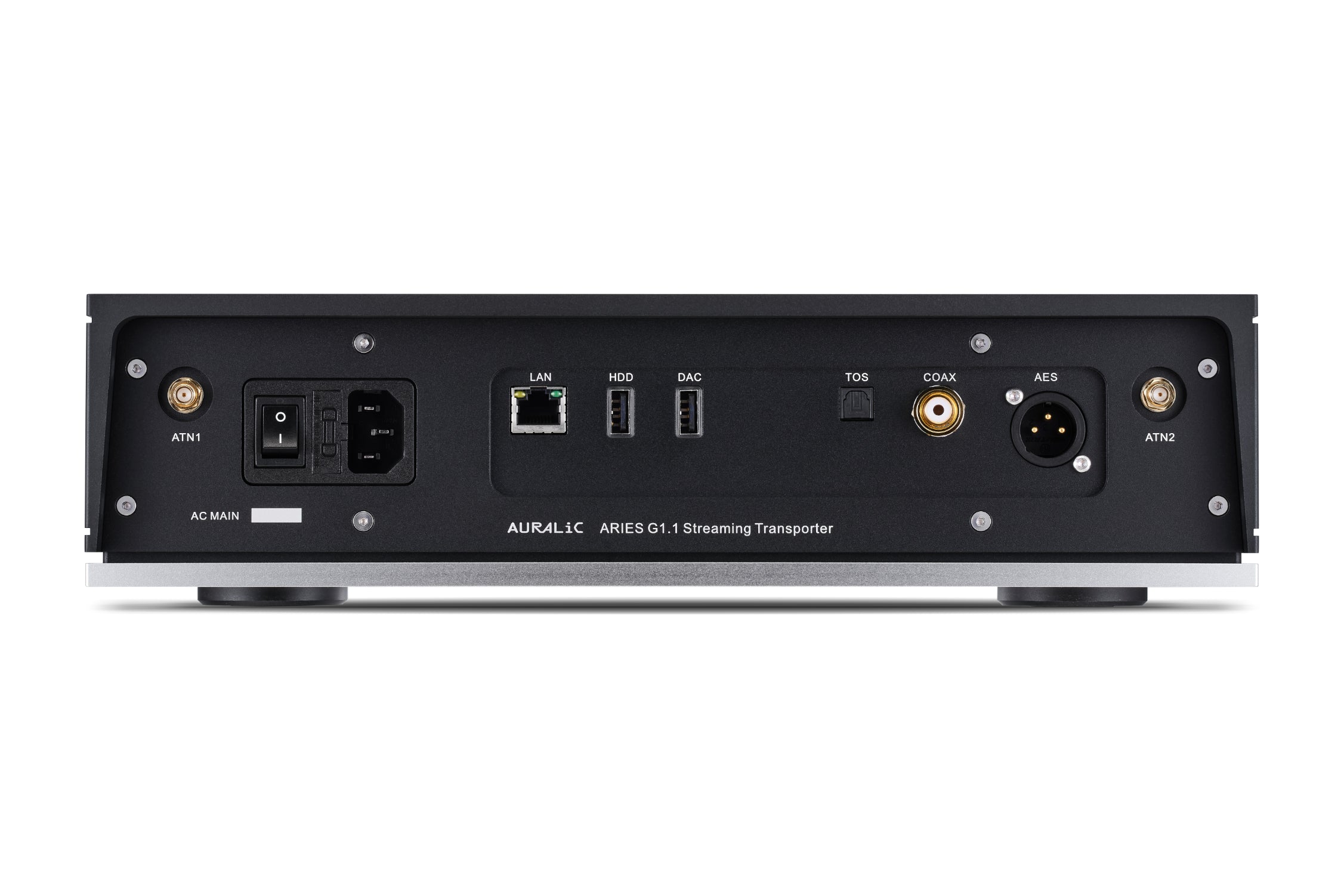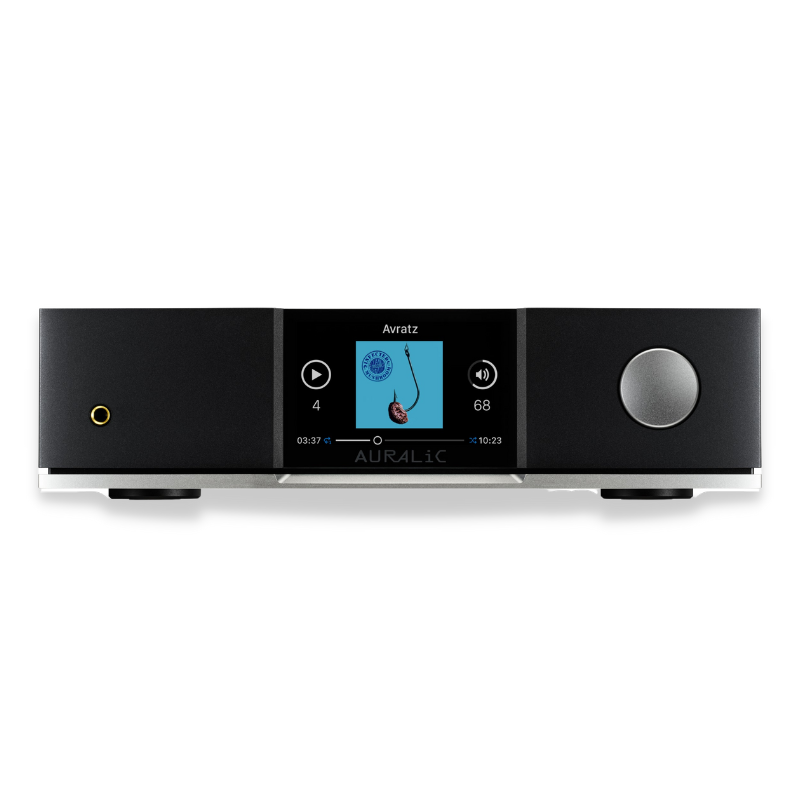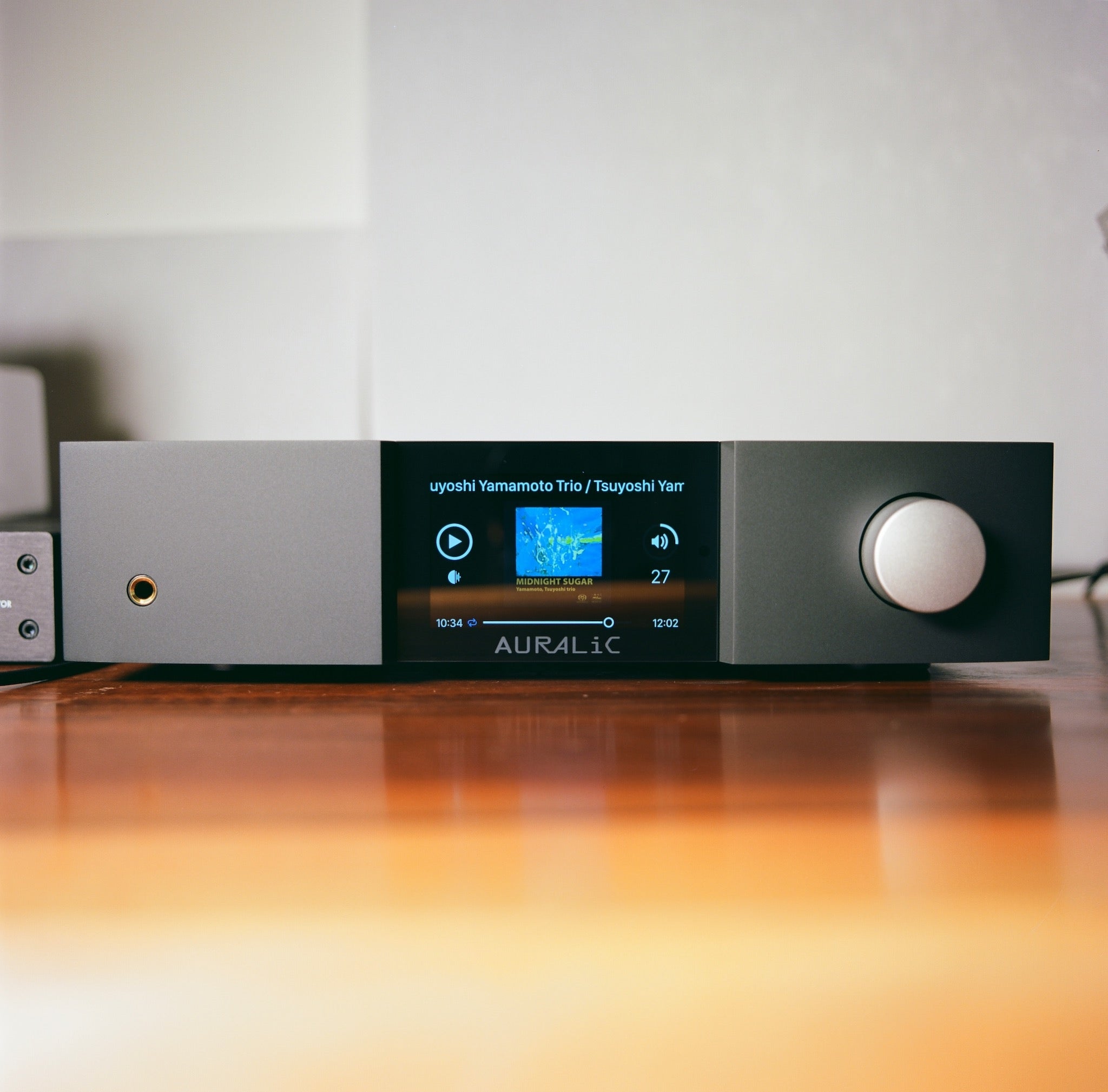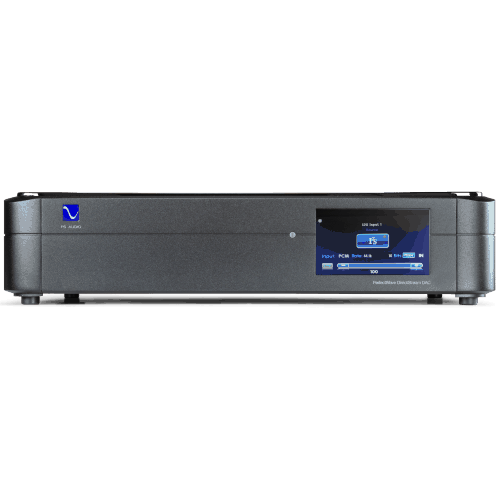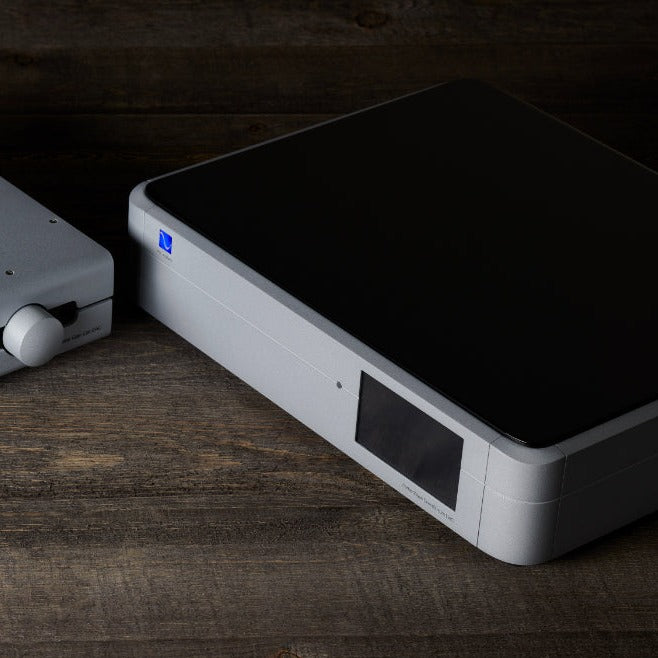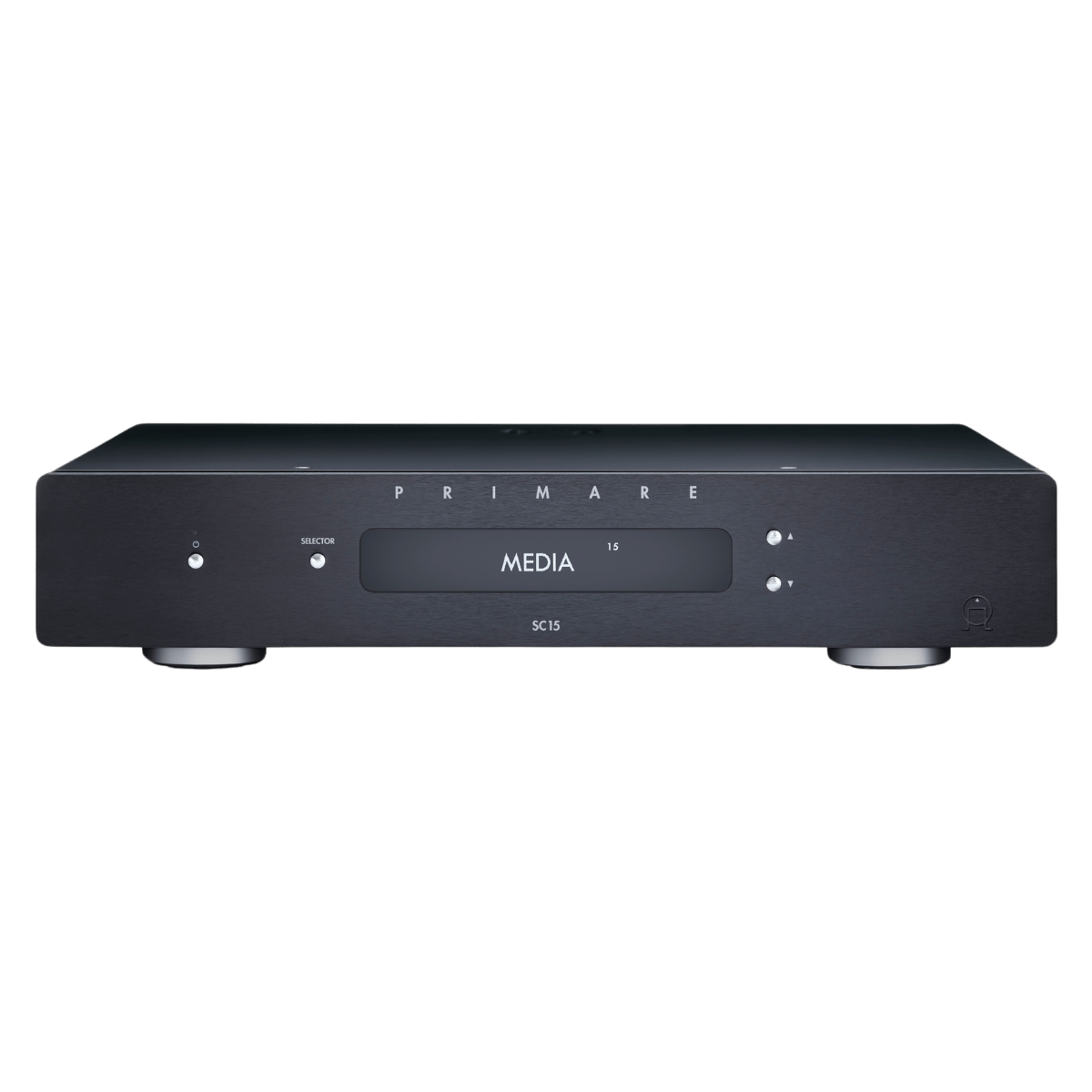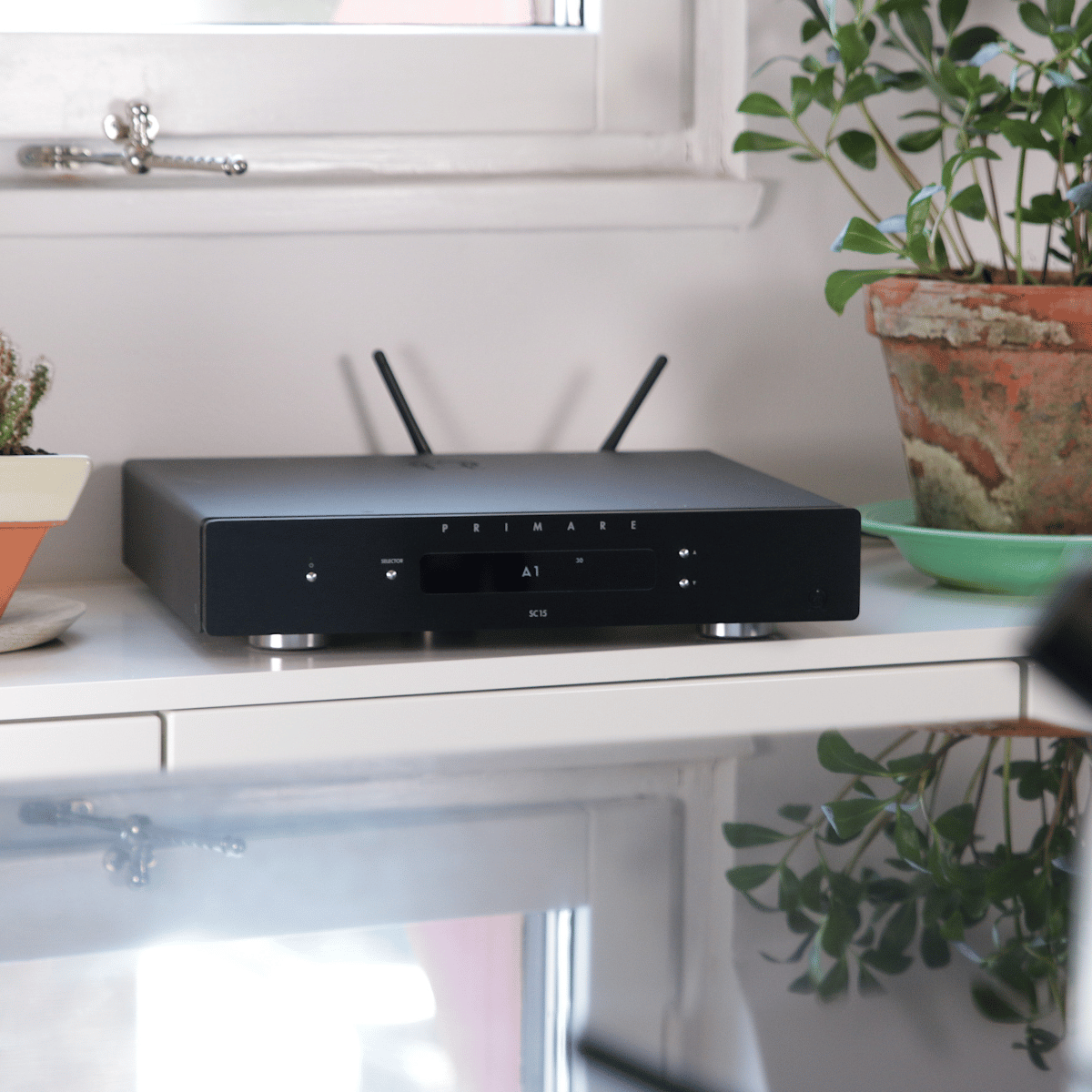
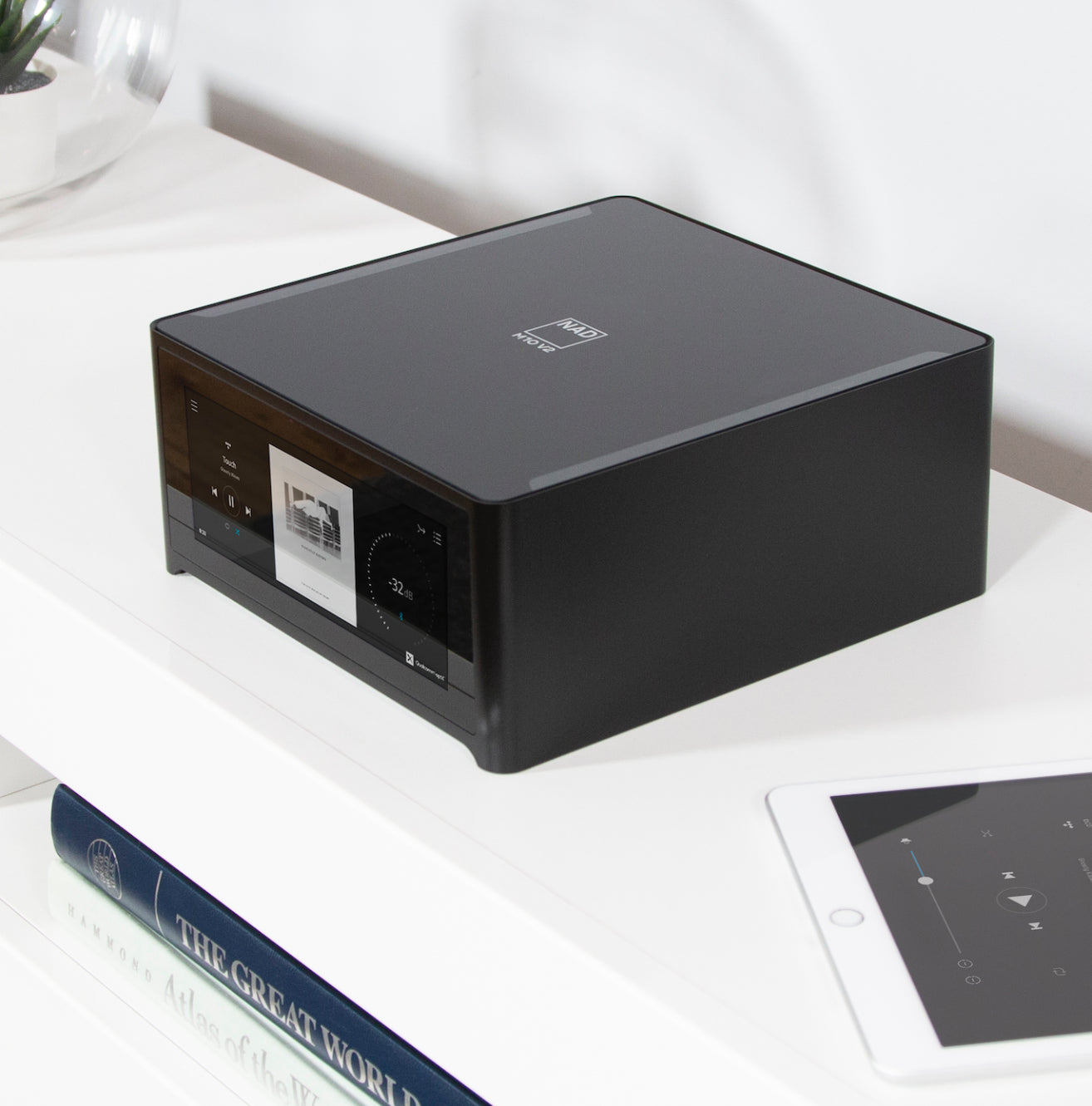
Music & Audio Streamers
Filters
44 products
TELL ME MORE ABOUT
Music & Audio Streamers
Immerse yourself in a world where high-fidelity sound meets the convenience of streaming with our collection of Network Audio Streamers. Tailored for audiophiles... Read More
Immerse yourself in a world where high-fidelity sound meets the convenience of streaming with our collection of Network Audio Streamers. Tailored for audiophiles who seek a seamless blend of traditional audio quality and modern streaming capabilities, these devices unlock a universe of music from online platforms, digital libraries, and internet radio, all while maintaining pristine audio quality.
What is a streamer?
A streamer is a device that plays digital music from various sources without relying on physical media. Connecting to your home network, it accesses music streaming services, internet radio, and digital libraries on networked devices. Streamers allow users to explore vast online music platforms like Spotify and Tidal, often supporting high-resolution audio that exceeds CD quality. With user-friendly interfaces, typically managed via smartphones or tablets, streamers centralize and simplify the music listening experience, acting as a modern-day jukebox for the digital age, seamlessly integrating with high-fidelity audio systems.
What are the advantages of using an audio streamer?
Using an audio streamer introduces a transformative experience to the realm of music listening.
One of the most prominent advantages is the unparalleled access to vast music libraries. With an audio streamer, listeners can delve into millions of tracks from various streaming platforms, ensuring a virtually endless array of musical choices. This expansive access is complemented by the streamer's ability to support high-resolution audio formats, allowing for a listening experience that captures the intricate details and nuances of recordings.
The convenience factor is also significant. Modern streamers come with intuitive interfaces, making music selection and playback a breeze. Gone are the days of changing CDs or vinyl; continuous, seamless listening is now the norm.
Furthermore, the consolidation of music from different sources provides a centralized hub, eliminating the need for juggling between devices. In essence, an audio streamer marries the richness of high-fidelity sound with the modern-day conveniences of the digital era.
The Different Types of Streamers
The world of audio streaming is diverse, with various devices tailored to different needs and preferences. Here's a breakdown of the primary types of streamers available:
-
Network Streamers: These are dedicated devices that connect to a home network, either wired or wirelessly. They stream music from online platforms, digital libraries on networked devices, and internet radio, often supporting high-resolution audio formats.
-
Media Players: These are versatile devices that can play both audio and video content. Examples include devices like Apple TV or Roku. While they offer music streaming capabilities, their primary focus might be video content.
-
Multi-room Streamers: Devices like Sonos or Bluesound fall into this category. They allow users to stream music to multiple rooms simultaneously, creating a cohesive listening environment throughout the home.
-
Portable Streamers: Compact and battery-powered, these are designed for on-the-go use. They can connect to headphones directly and often have storage for offline playback.
-
Integrated Amplifier Streamers: These are amplifiers with built-in streaming capabilities. They simplify setups by combining two critical components into one, ideal for those looking to reduce equipment clutter.
-
Smart Speakers: Devices like Amazon Echo or Google Home come with streaming capabilities. They often integrate voice assistants, allowing users to request songs or playlists vocally.
Each type of streamer offers a unique set of features and functionalities. The choice depends on the user's specific requirements, whether it's multi-room audio, portability, or integration with other media.
How to Choose the Best Music Streamer for Your Needs
Selecting the ideal music streamer requires a blend of understanding your personal preferences and the technical aspects of the device.
Start by assessing the primary purpose of the streamer.
Are you looking for a device that solely focuses on audio, or do you want a versatile media player that handles both audio and video? Your decision might also hinge on the quality of audio playback. If you're an audiophile, a streamer that supports high-resolution audio formats will be paramount.
Consider the sources you'll be streaming from.
Some streamers excel with specific platforms like Tidal or Spotify, while others offer a broader range of compatibility. The connectivity options are equally crucial. Ensure the streamer can seamlessly integrate with your existing audio setup, whether it's through Wi-Fi, Bluetooth, or wired connections.
User interface and control options can influence your experience.
Some streamers come with dedicated apps or remote controls, offering an intuitive browsing and playback experience. Budget, of course, plays a role. While there are premium streamers with advanced features, many affordable options deliver excellent performance. Lastly, read reviews and, if possible, test a few models. Personal experience can often be the best guide in making an informed choice.
Setting up and Using a Network Audio Streamer:
Every bit of kit will be slightly different from brand to brand and model to model. You should always follow the specific manufacturer instructions for setup - however, these are the general principles to consider:
- Location: Place the streamer near your amplifier or receiver and within good range of your home network.
- Network Connection: For wired setups, use an Ethernet cable to connect to your router. For wireless, ensure a strong Wi-Fi signal.
- Initial Setup: Power on the streamer and follow on-screen prompts. This may include language selection, time zone setting, and firmware updates.
- Audio Integration: Connect the streamer to your amplifier or receiver using appropriate cables (e.g., RCA or optical).
- Select Input: On your audio system, choose the correct input source corresponding to the streamer.
- App Integration: Download the streamer's dedicated app on your smartphone or tablet and pair it with the device.
- Explore & Play: Use the app to browse music from streaming services, digital libraries, or internet radio and enjoy your enhanced audio experience.
Final Thoughts
A network audio streamer is a valuable addition to any audio setup, offering both convenience and enhanced sound quality. It bridges the gap between online music sources and traditional audio systems, ensuring easy access to vast music libraries. For both avid audiophiles and everyday listeners, the right streamer can make a noticeable difference in audio quality and user experience. As you consider integrating one into your system, focus on compatibility and your listening preferences to get the most out of your investment.
Some Quick FAQ:
What is a streaming amplifier?
A streaming amplifier is an all-in-one device that combines an amplifier with built-in streaming capabilities, allowing you to stream and play music without the need for additional equipment.
What is a network player?
A network player is a device that connects to your home network and allows you to stream and play music from various sources over the network.
What is a music server?
A music server is a device or software that stores and organizes your music library, allowing you to access and play your music collection from multiple devices.
What is a node?
In the context of music streaming, a node refers to a device that acts as a connection point or interface between different components of a streaming system.
NEED MORE GUIDANCE?
We are here to help
Check out some of our most commonly asked questions.
What do I need to play records?
Getting into vinyl? That’s awesome! We have some curated turntable Hi-Fi packs, with everything you'll need to get spinning right away. But if you want to build your own, read on for all the details.
First off, you'll need a turntable. It's the star of the show, so make sure it’s in good nick, with a decent cartridge and stylus (needle).
Next, there’s the phono preamp. Some turntables or amplifiers come with one built-in, but if yours doesn’t, you’ll need one as a bridge between your turntable and amplifier or powered speakers.
For the sound output, you’ve got two options. You can go with a traditional setup involving an integrated amplifier to take the signal from your phono preamp and power your passive speakers. Alternatively, you can opt for powered speakers, which have the amplifier built in – a handy all-in-one solution.
Speaking of speakers, good ones are a must for that rich, warm vinyl sound we all love. Whether you go for bookshelf or floorstanding speakers (or powered ones) depends on your space and budget.
And there you go! With these essentials, you’ll be ready to dive into your vinyl collection and enjoy that classic sound.
What can a wireless speaker do?
Wireless speakers are a game-changer for how you enjoy music and audio around the house. First off, they let you stream music wirelessly from your phone, tablet, or computer, so no more messing about with cables. You can easily play tunes from Spotify, Apple Music, Tidal or whatever streaming service you fancy.
If you’re into having music everywhere, many wireless speakers offer multi-room audio. You can sync them up to play the same music in every room or control what plays in each room individually, perfect for parties or just keeping the vibes consistent throughout your home.
Voice control is another brilliant feature. Many come with built-in assistants like Alexa, Google Assistant, or Siri. You can control your music with just your voice, ask for the weather, set reminders, or even control other smart home devices.
Sound quality? These little gadgets often pack a punch, delivering high-quality audio that can rival traditional wired setups. Some even offer 360-degree sound, filling the room with music from every angle.
In a nutshell, wireless speakers bring flexibility, convenience, and top-notch sound to your audio experience, making them a fantastic addition to any home. Whether you’re hosting a party, working from home, or just chilling out, they make listening to music a breeze.
How do you choose the right speaker & amplifier combination?
Deciding on a good speaker and amplifier combination is like putting together a perfect wine and cheese pairing—it’s all about balance and harmony. Here’s a conversational guide to help you through it:
First, consider your speakers. These are your main players, so you want to choose ones that fit your space and listening preferences. If you love deep bass and have a bit of room, floorstanding speakers might be your go-to. For smaller spaces or a more subtle look, bookshelf speakers are fantastic.
Now, onto the amplifier. This is where things get interesting. Your amp needs to match your speakers in terms of power and impedance. Check the wattage ratings on your speakers—your amplifier should provide enough power to drive them properly. Too little power and you’ll be missing out on sound quality; too much, and you risk damaging your speakers.
Next, think about the impedance (measured in ohms). Your amp and speakers should be compatible here too. Most speakers are rated at 8 ohms, but some can be 4 or 6. Make sure your amplifier can handle the impedance of your speakers to avoid any performance issues.
Another important factor is the type of sound you’re after. Some amps are known for their warm, rich tones, while others might be more neutral or even slightly bright. It’s a bit like choosing between a vinyl record and a digital stream or CD —each has its own charm. If possible, listen to different amp and speaker combinations to see what sounds best to your ears.
If purchasing online, note that at LE, we have made recommendations on speaker & amplifier combinations that we think sound wonderful together within each product listing.
Don’t forget about connectivity and features. Modern amplifiers often come with a host of options like Bluetooth, Wi-Fi streaming, and various inputs for all your devices. Make sure your amp has the inputs you need for your turntable, CD player, or streaming device.
Finally, consider your budget. Great sound doesn’t always mean breaking the bank, but be prepared to invest to get a quality setup that will last.
In the end, trust your ears. Listen to a few combinations if you can, and go with what makes your music sound the best to you.
Why do I need a headphone amplifier?
If you’re diving into the world of high-quality audio, a headphone amplifier can be a real game-changer. Think of it like this: most standard devices, like your smartphone or laptop, just don’t have the oomph needed to drive headphones properly. They might get the job done, but they won’t do your music justice. A headphone amp gives your headphones the power they need, ensuring you get the volume and clarity that really makes your music shine.
It’s not just about making things louder, either. A good headphone amp can significantly improve sound quality. You’ll get clearer highs, richer mids, and tighter bass, making your favourite tracks sound even better. You might notice details you’ve never heard before, especially if you’re listening to high-resolution audio files.
Premium headphones often have higher impedance, meaning they require more power than your typical audio source can provide. A headphone amp can handle this with ease, making sure your headphones perform at their absolute best. Plus, many amps come with extra features like bass boost, equalisation, and gain control, giving you more ways to tweak the sound to your liking.
In short, if you’re passionate about your music and want to hear it in the best possible way, a headphone amplifier is definitely worth considering. It’s all about unlocking the full potential of your gear and really getting the most out of your listening experience.
Where should I start when designing a home cinema?
Designing your own home cinema? That's awesome! We are here to help walk you through the process, but as a starting point, here’s what we would recommend and where to kick things off:
First up, pick your spot. For most people this is your existing lounge room, but if you have an underused garage, or spare bedroom, then you have an opportunity to create your very own true Home Cinema experience. Find a room that’s just right—not too cramped and ideally away from noisy areas. This sets the stage for that immersive movie experience.
Next, think about how you’ll set things up. Plan where your seats will go and where to place your projector screen for the best view from every angle. It’s all about creating that comfy, cinematic vibe.
Sound matters, too. Consider if you want a wireless system for simplicity or a full surround sound speaker system with AV receiver for that surround-sound thrill. Think about soundproofing or adding acoustic panels or thick carpets to really amp up the audio quality of the room.
Now, onto the screen. Decide between a crisp TV or a projector setup, depending on your room size and personal style. Maybe even throw in some dimmable lights or smart lighting to set the mood just right.
And hey, don’t forget comfort. Invest in plush cinema seating and think about the décor—whether it’s movie posters, blackout curtains, or popcorn machine & bar area, whatever gives you that true cinema feel.
Lastly, tech it up! Make sure everything—from your Blu-Ray player & Apple TV to your gaming consoles—is set to sync perfectly with your new setup.
With these steps, you’re on your way to creating a home cinema that’s not just a space, but an experience. Enjoy movie nights like never before!

